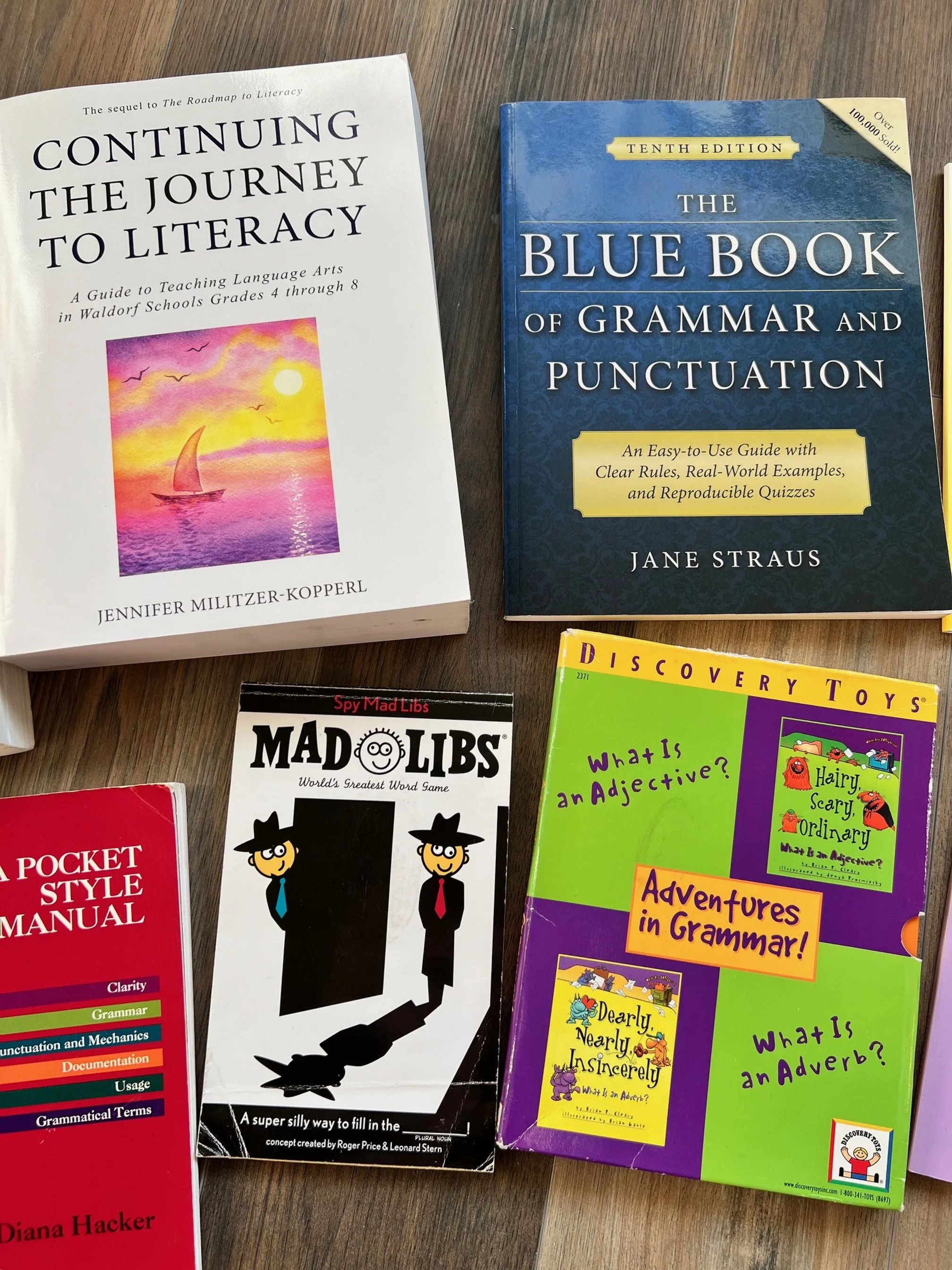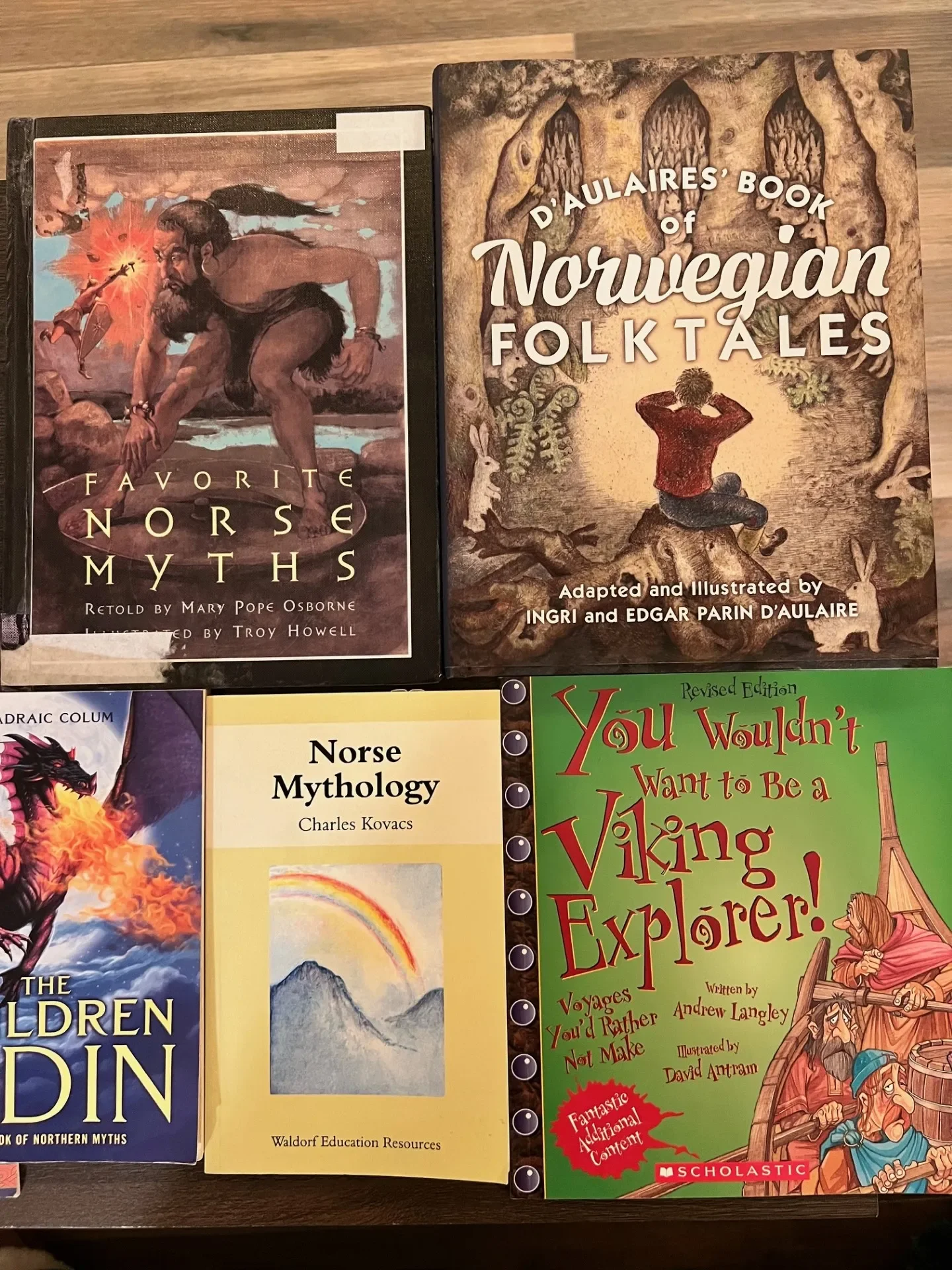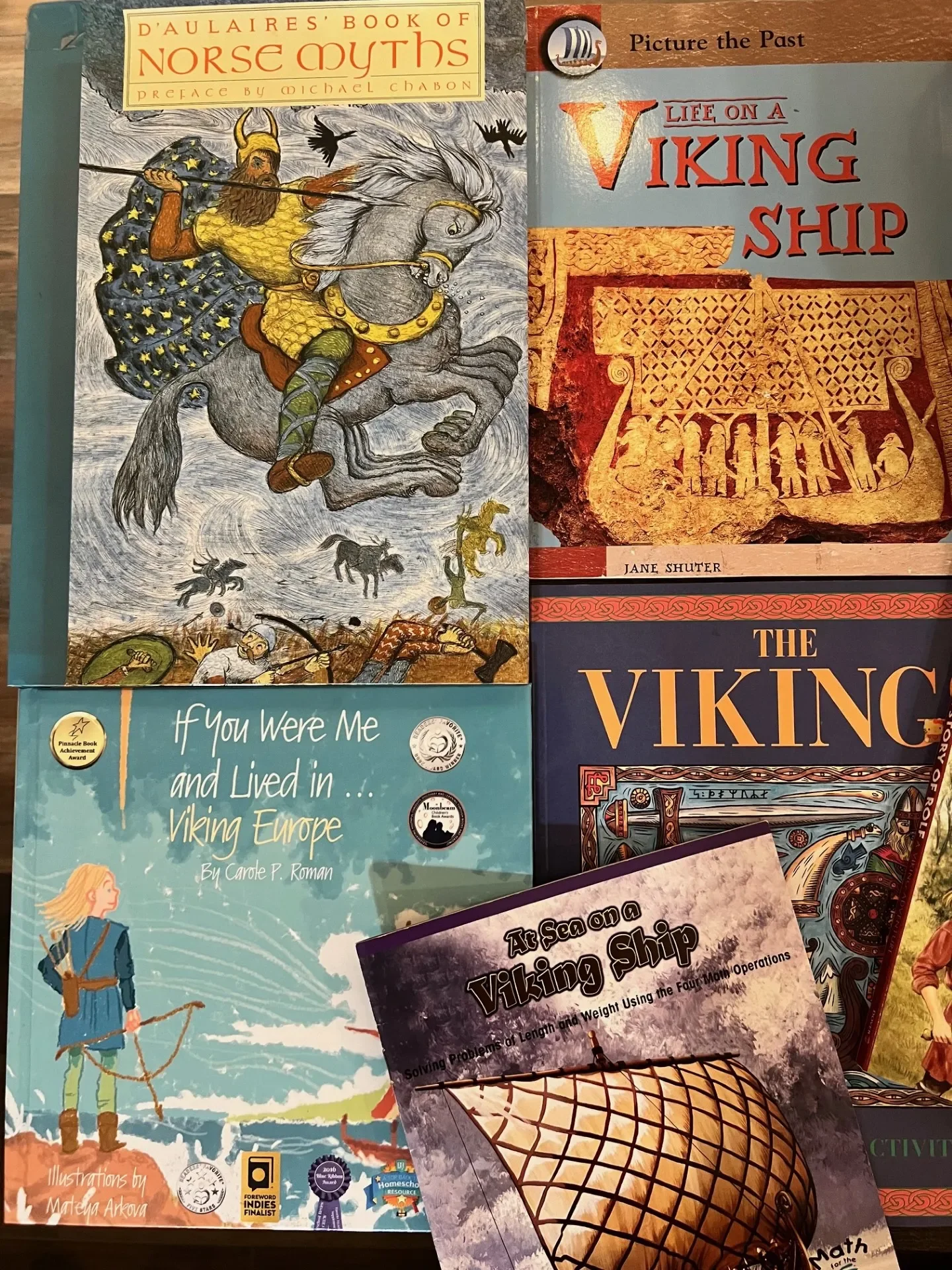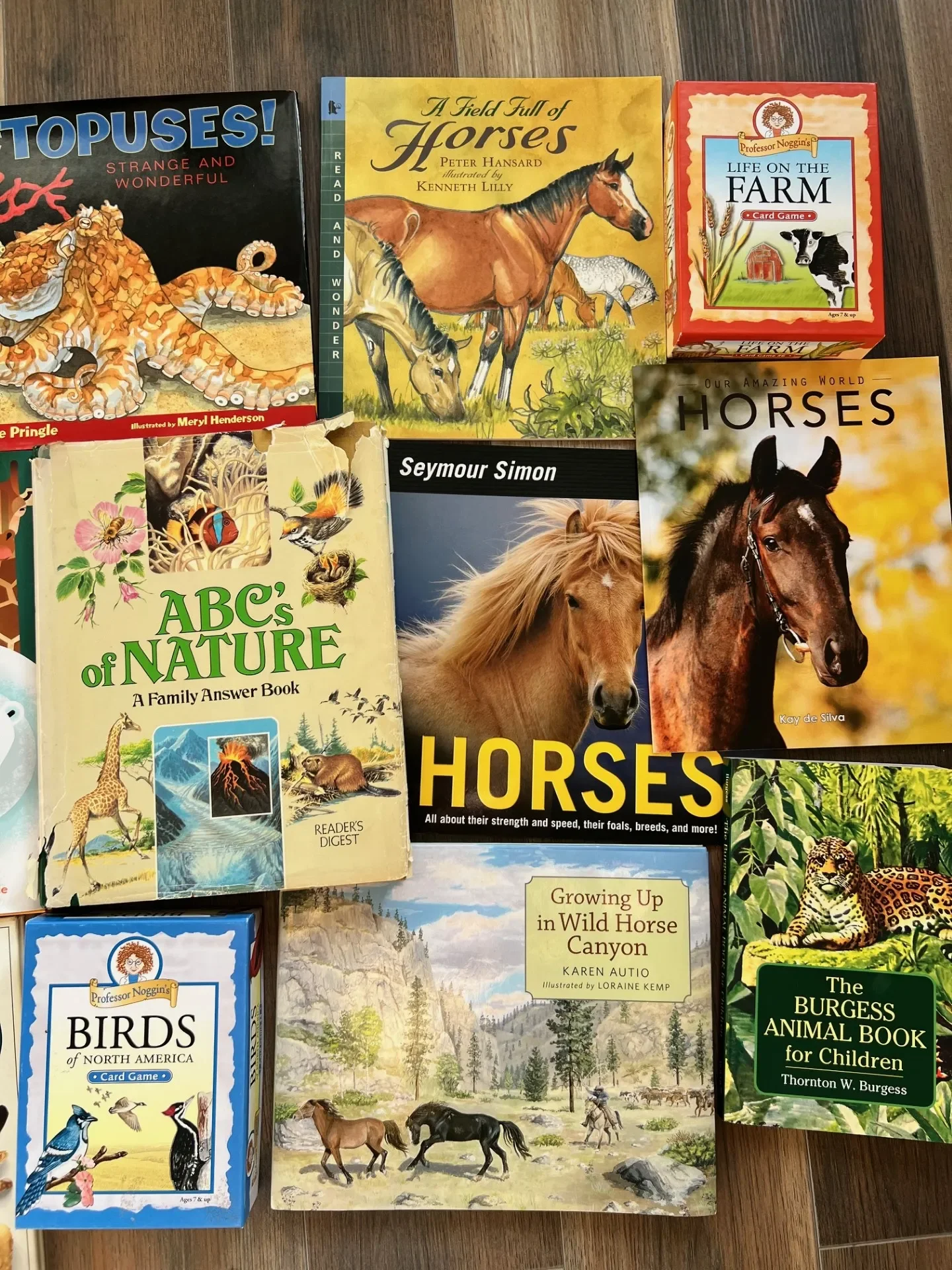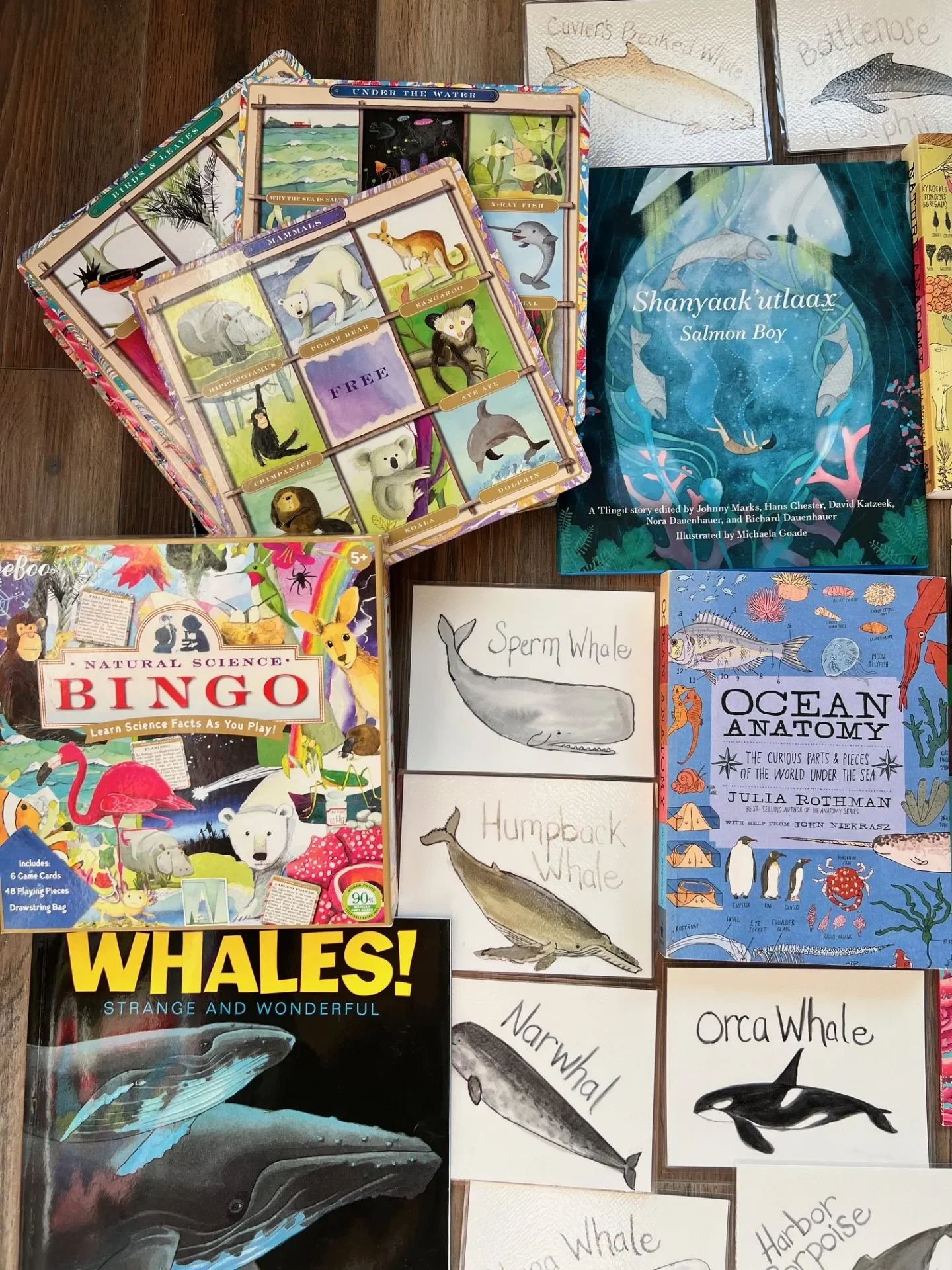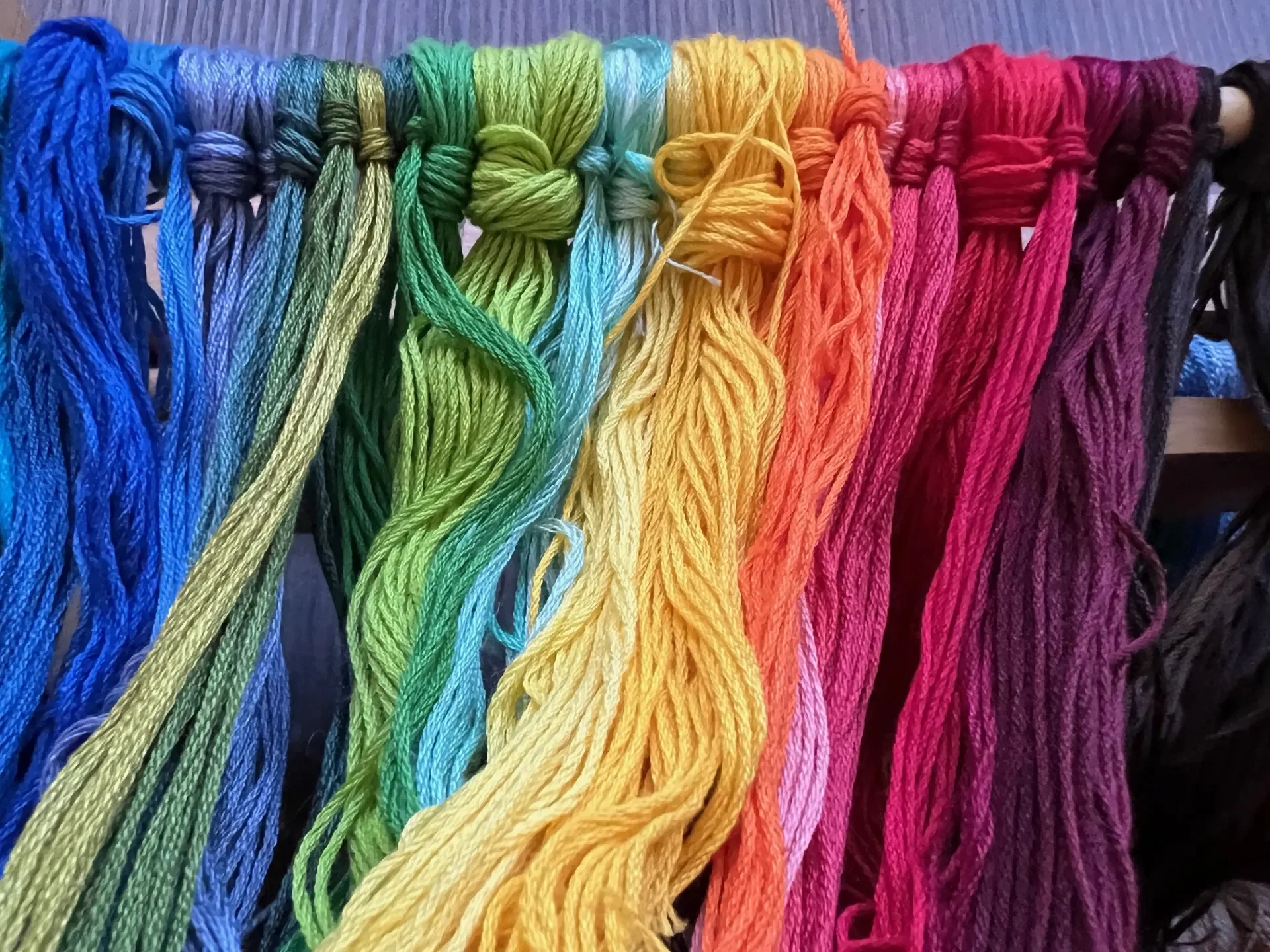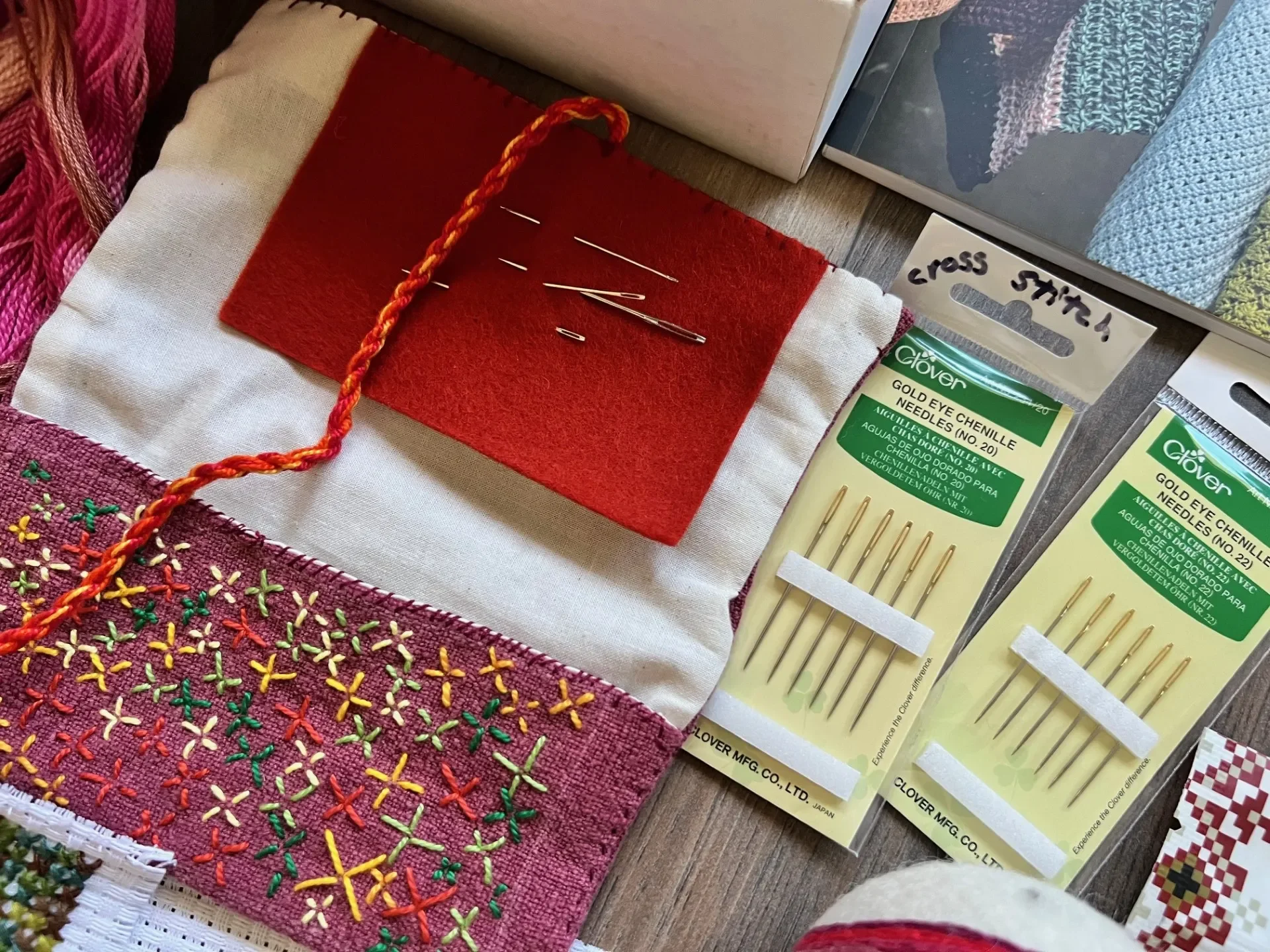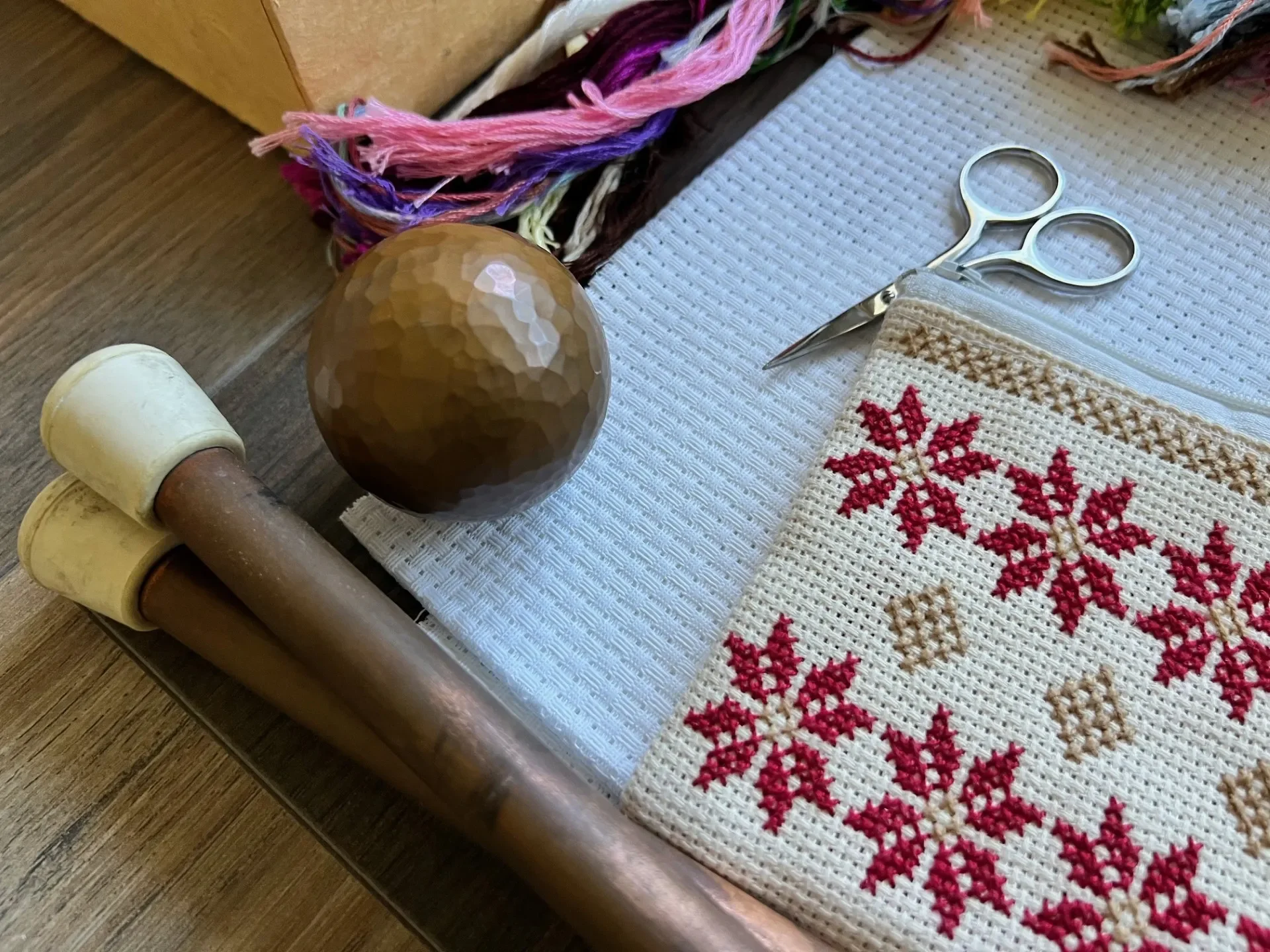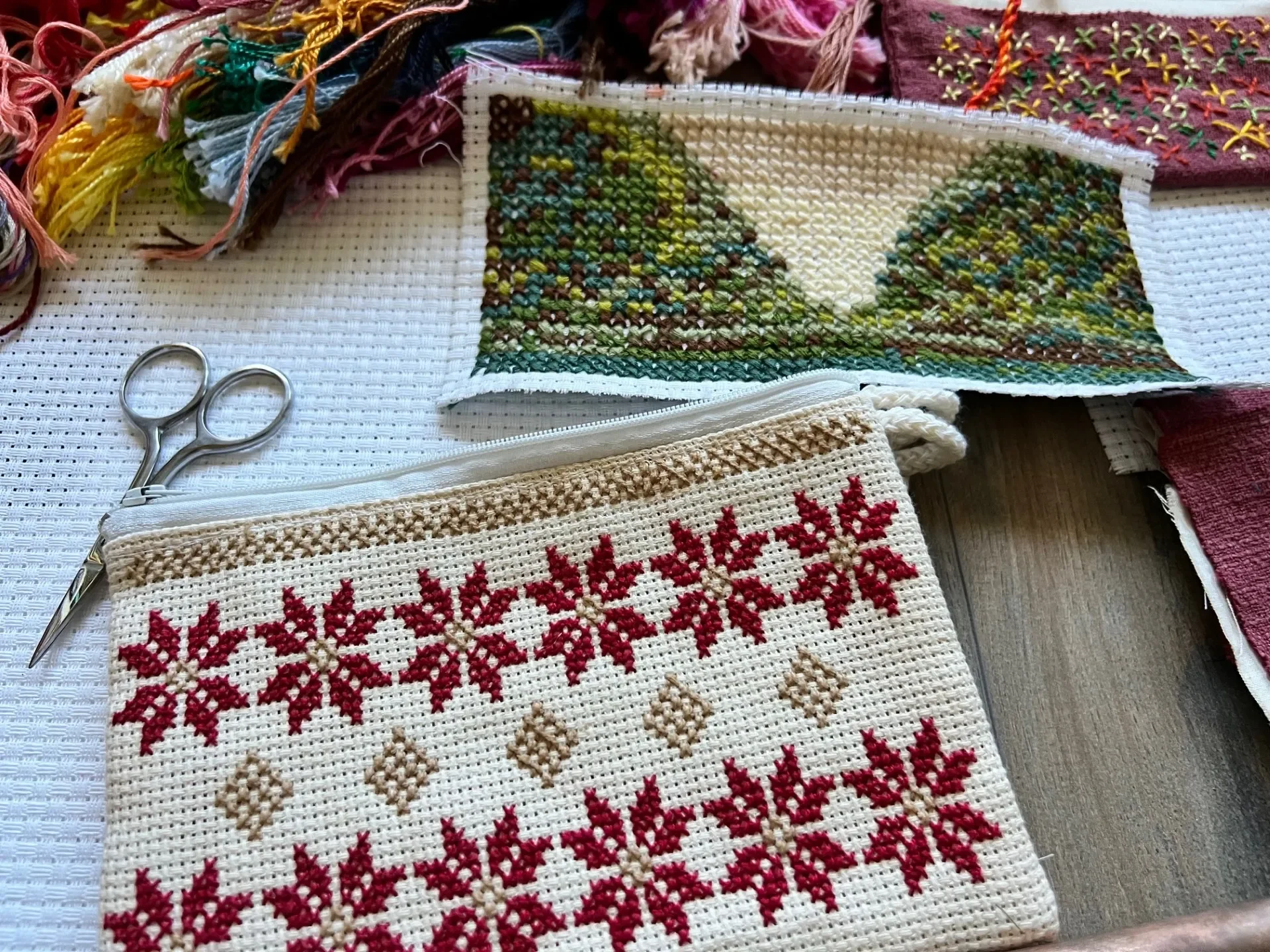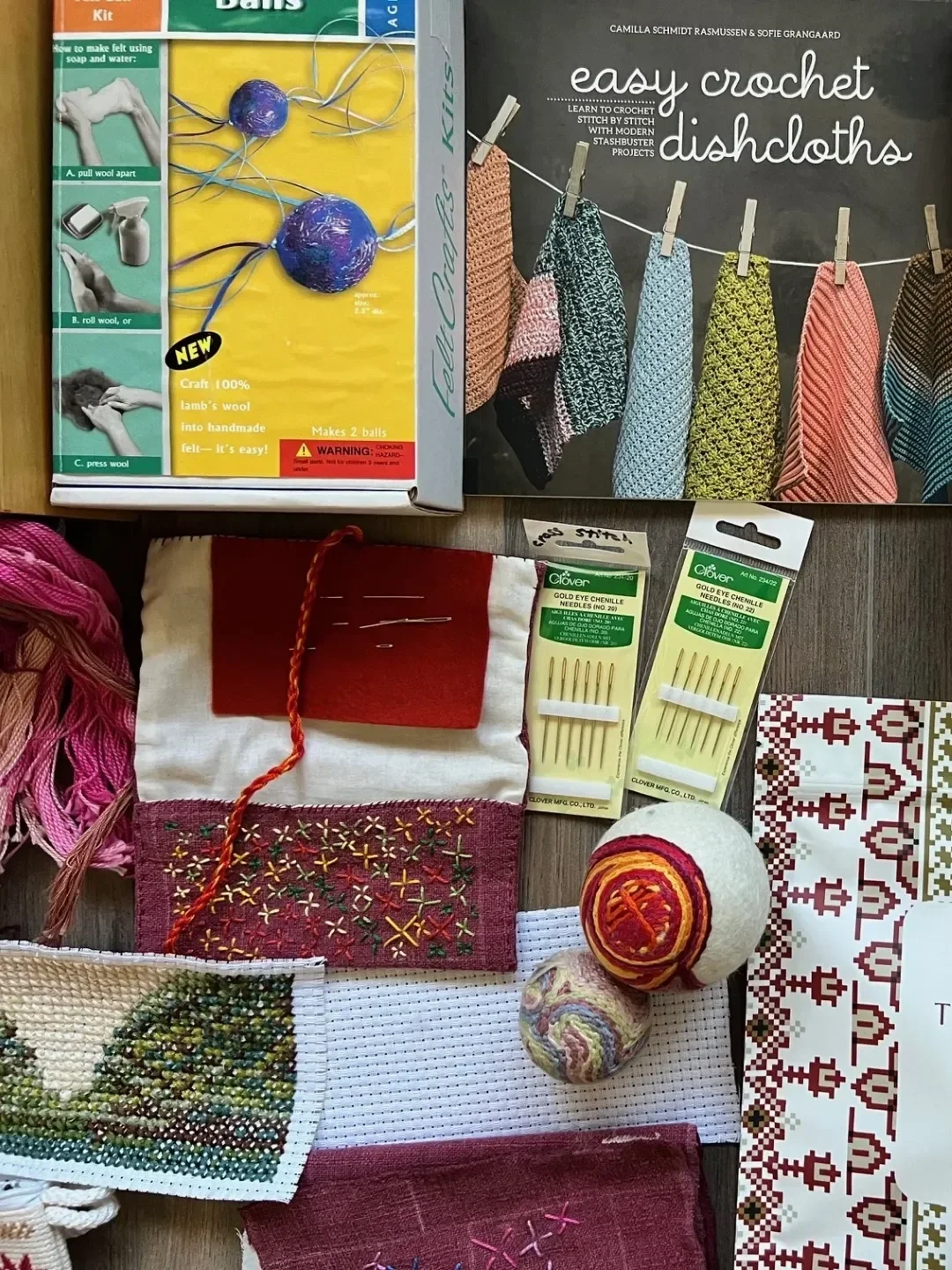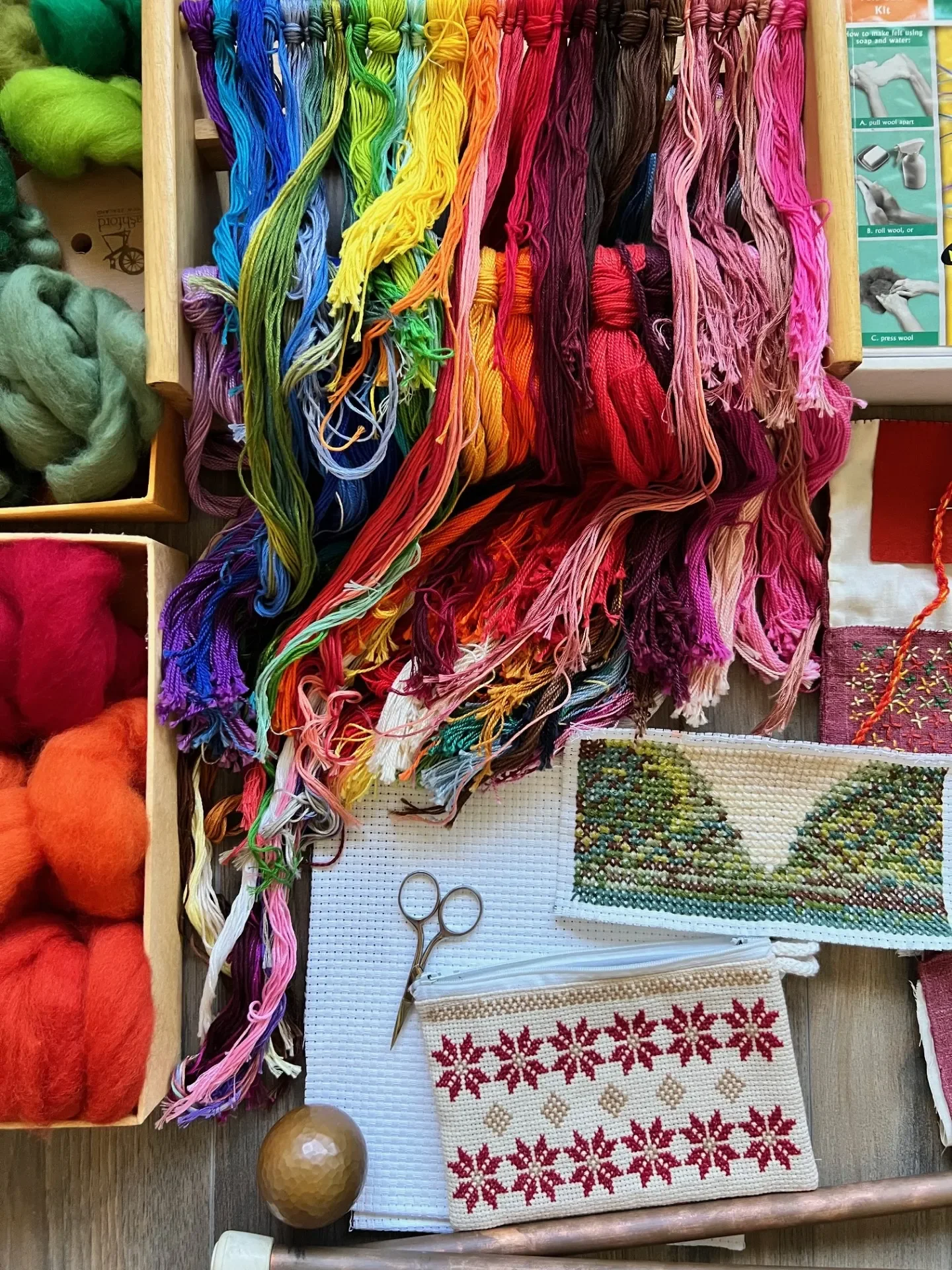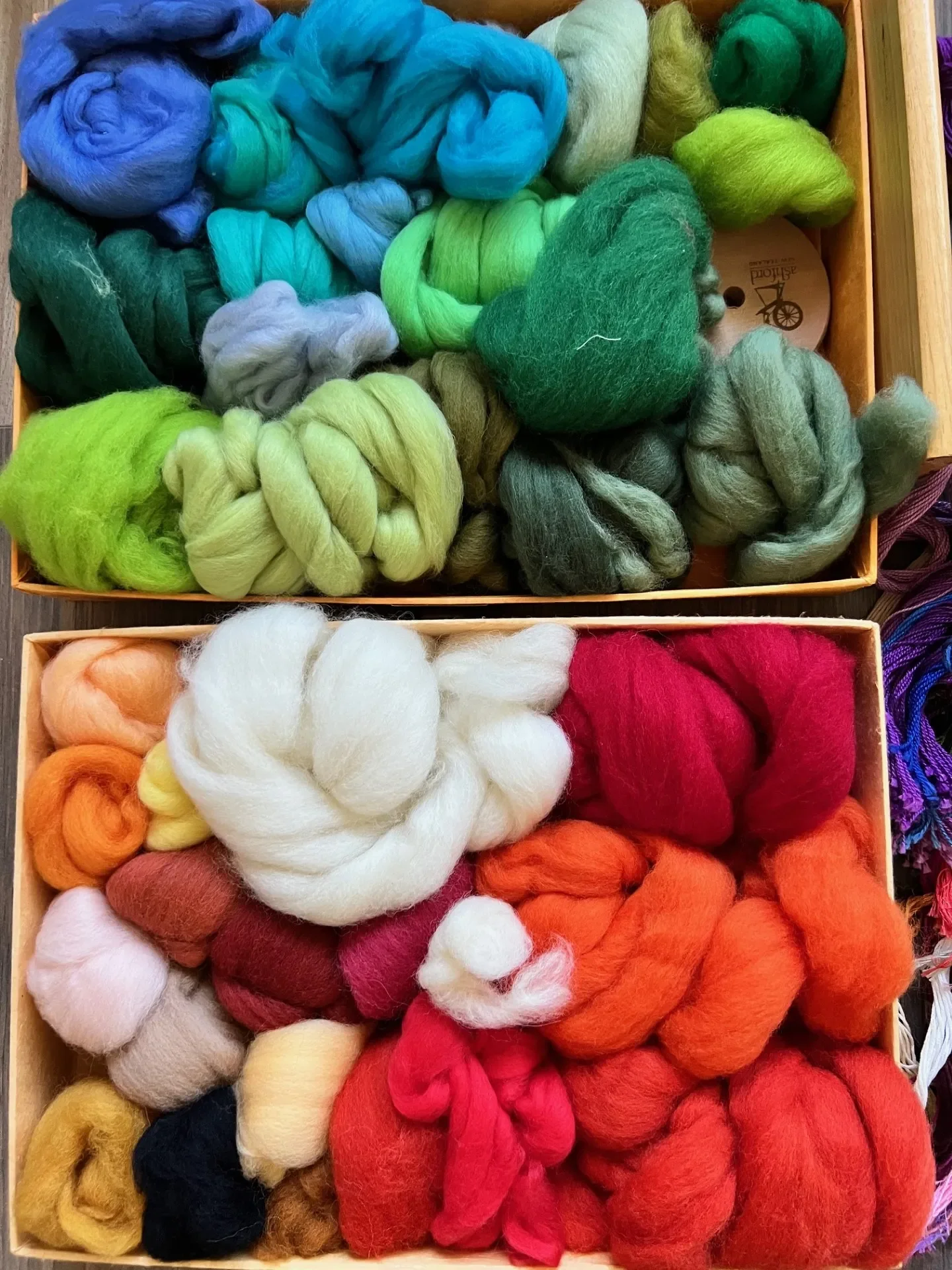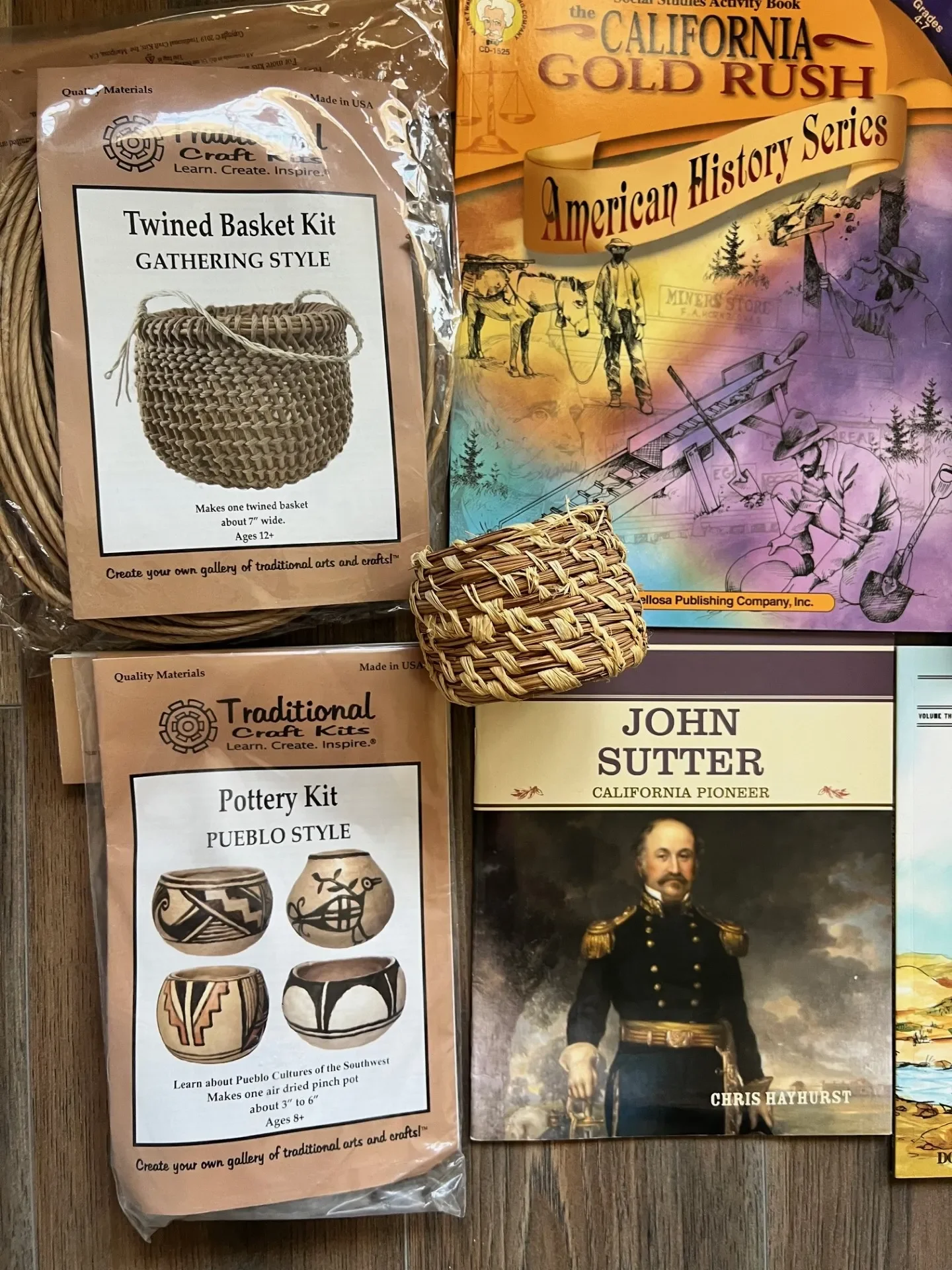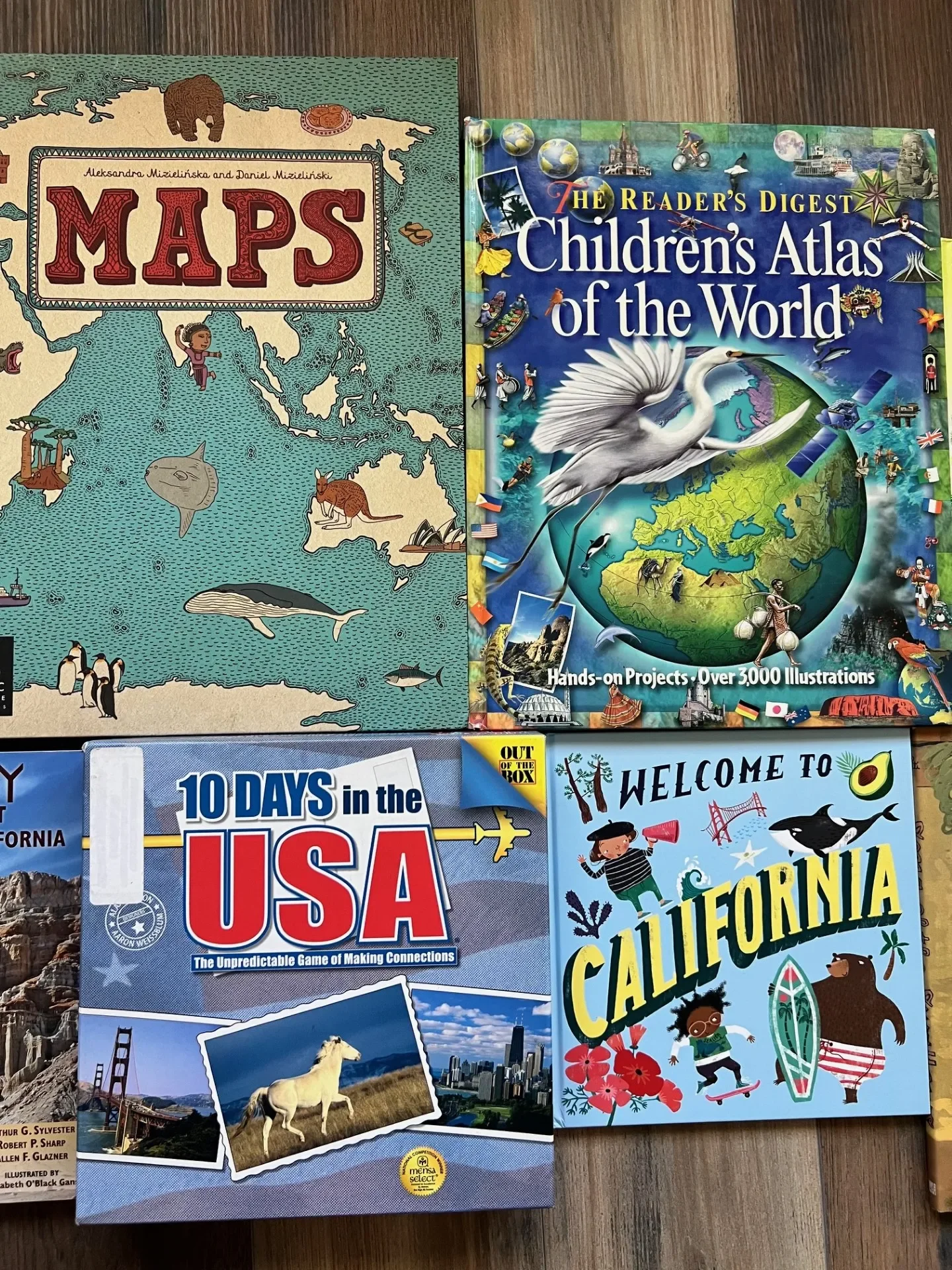All-in-One | Curriculum
Boxed curriculum is an all encompassing curriculum that contains all the subjects you need to round out your school year. Often a boxed curriculum comes with teacher resources as well as student work.
Boxed Curriculum | All In One Curriculum
-

Curriculum Review | 1st Grade | Waldorf Inspired
I have to say, I wasn't expecting this. I know Oak Meadow has done an overhaul of their curriculum. They've updated, revised and tweaked their long standing success curriculum. I admit that I wasn't as taken by the 5th grade curriculum which Oak Meadow sent to me last year to review. That curriculum is with our charter school, as it was not sent to me in exchange for my review or video or blog post. This time around, my sister purchased the first grade curriculum for her son. Feeling overwhelmed and hesitant as to whether or not this was a good curriculum, she asked me to review it and share my thoughts with her. "Of course!" I said. Better yet, I'll share my thoughts with you, too.
-

4th & 5th Grade Curriculum Choices || MOVING BEYOND THE PAGE || Homeschool Curriculum
If you want a literature-based all inclusive curriculum, Moving Beyond The Page may be the curriculum you're looking for. This curriculum integrates language arts, science, and social studies together using literature as the 'textbooks'. An independent math curriculum, such as Right Start Math, is suggested, and the website sells that separately.
-

6th & 7th Grade Curriculum Choices | MOVING BEYOND THE PAGE | Homeschool Curriculum
If you want a literature-based all inclusive curriculum, Moving Beyond The Page may be the curriculum you're looking for. This curriculum integrates language arts, science, and social studies together using literature as the 'textbooks'. An independent math curriculum, such as Right Start Math, is suggested, and the website sells that separately.
-
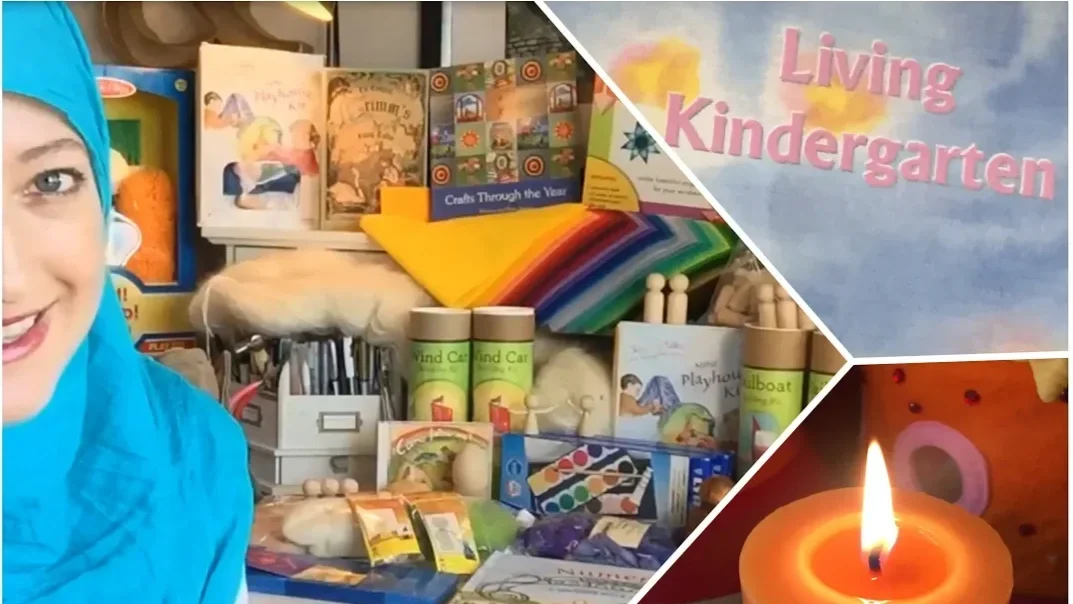
Waldorf Kindergarten Curriculum
In a Waldorf curriculum, the day follows a rhythm as does the week and the season. Each day of the week is devoted to a grain, color and activity, for instance Monday's color is purple and the grain in rice. Washing and cleaning dominate Monday's activities, while Tuesday's color is red and the grain is oats. Tuesday's breakfast may be oatmeal topped with red strawberries.
-

Waldorf Kindergarten Curriculum | Seasons
This video covers the four season books that are included in the Waldorf Kindergarten curriculum from Live Education. We use the Live Education Waldorf curriculum as inspiration for grades K-8th. Today, I'm covering three of the seven books that come in the KG curriculum: Folk and Fairy Tales, The First Seven Years and Introduction to KG. You can find the curriculum and more pictures at Live-Education. The other four books: autumn, winter, spring, and summer are covered in another video:
-
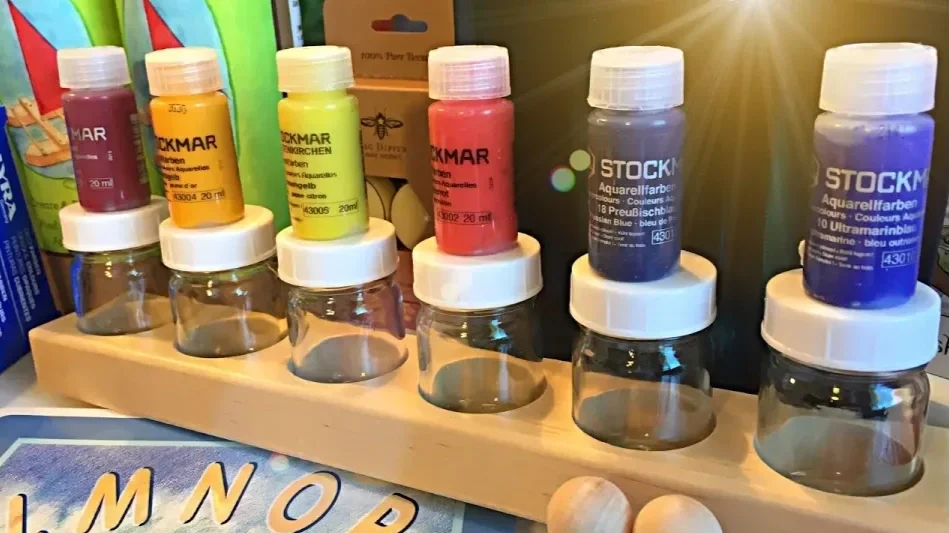
1st Grade Waldorf Curriculum
First grade in a Waldorf school begins at seven years of age, after the change of teeth has begun. Other notable differences about a the first grade curriculum is the story aspect of each lesson, even when you present the child with her first recorder, you present it along with a story. Stories are an important part of the Waldorf curriculum.
-

Curriculum Comparison | Oak Meadow VS. Live Education | Waldorf
Oak Meadow and Live-Education are Waldorf inspired curricula, but what's the difference between the two and which one is more authentic to the Waldorf philosophy? I'm comparing the kindergarten curriculum for both Oak Meadow and Live-Education to give you an in depth look at how each curriculum is set up, what books come with each and how user friendly they are.
-

Curriculum Comparison | Grade 2 Waldorf
It's one of the hardest things choosing a curriculum. Today, I'm sharing two boxed curricula that are Waldorf inspired. One more so than the other, yet one is more user-friendly than the other. I'm featuring the old version of the Oak Meadow 2nd grade curriculum you can only find second hand, but you can find the updated version of the curriculum at the Oak Meadow website
-
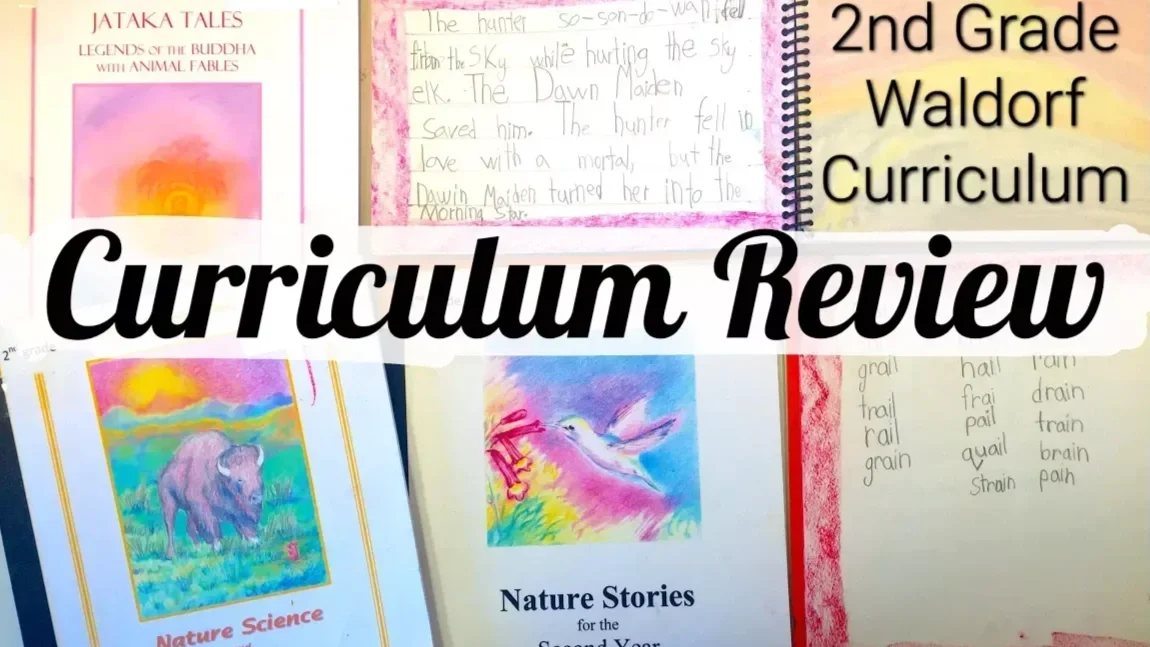
2nd Grade Waldorf Curriculum | Grade 2
Taking a look at the Live-Education 2nd grade Waldorf curriculum you'll find a unique approach to the subjects typically found in most curricula for this age. I will also give you a peek at the main lesson books my son made. There are no workbooks or textbooks in this curriculum, so you're going to have to actively participate to make this curriculum work. It's definitely teacher-led and all lessons are delivered by the teacher in an oral manner.
-
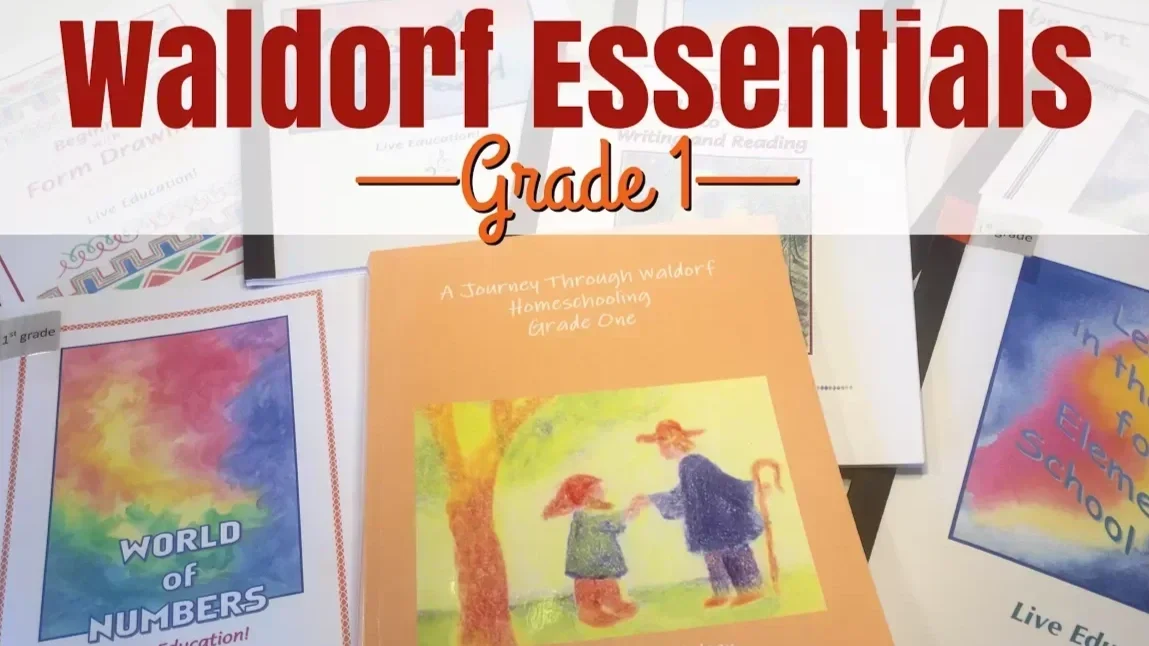
Grade 1 Waldorf Essentials Curriculum Review + Comparison with Live Education
It's probably the biggest homeschooling decision you're going to make: Choosing a curriculum. When you've finally narrowed down you want to do a Waldorf approach, next you have to sort through the Waldorf curricula that are available. Today I'm walking you through the Waldorf Essentials curriculum for first grade with a comparison to the Live-Education curriculum also for grade one.
-
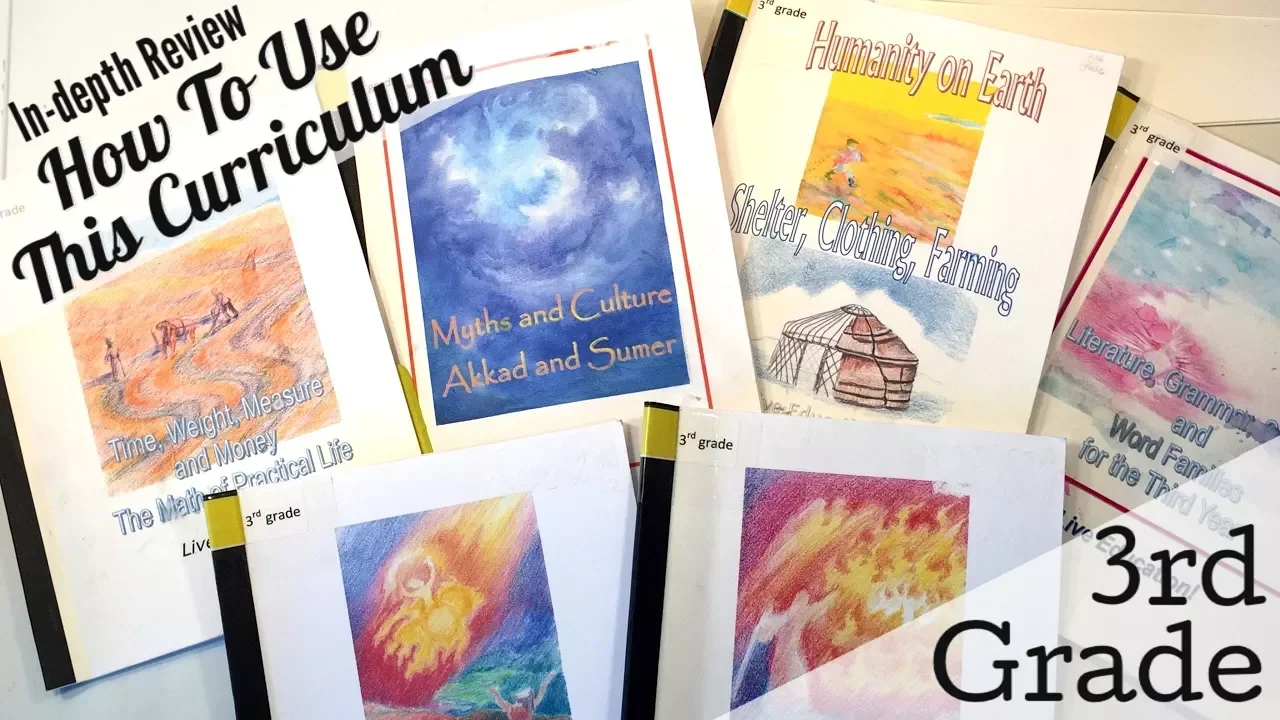
3rd Grade Waldorf Homeschool Curriculum
When I first saw the third grade Waldorf curriculum, I wasn't interested in using it because there was so much content I didn't intend to use. A few years later, I realized the wisdom behind why these particular main lesson blocks are chosen for the 9-year-old student. I'll share those reflections in the video as well as give you an in-depth review of the Live Education! curriculum with tips of how to use it.
-

Waldorf Grade 4 | Complete Overview
This video is the compilation of the videos for Waldorf Grade 4 including the Main Lesson Blocks for Grammar, Math, Norse Myths (and other epic poems), Man and Animal (Zoology), Geography, History and Industry and Handwork as well as an overview of the child in Grade 4 as a 10 year-old and the development and types of stories that best suit those changes and milestones.
-

Waldorf Curriculum | Live Education | 5th Grade
The Live-Education 5th grade curriculum has an emphasis on ancient history, botany and geometry. But just because a formal language arts program may be absent from the curriculum, it doesn't mean it's absent all together. In fact, you'll be surprised at how much writing, dictation and copywork occur with the history and science main lesson blocks
-
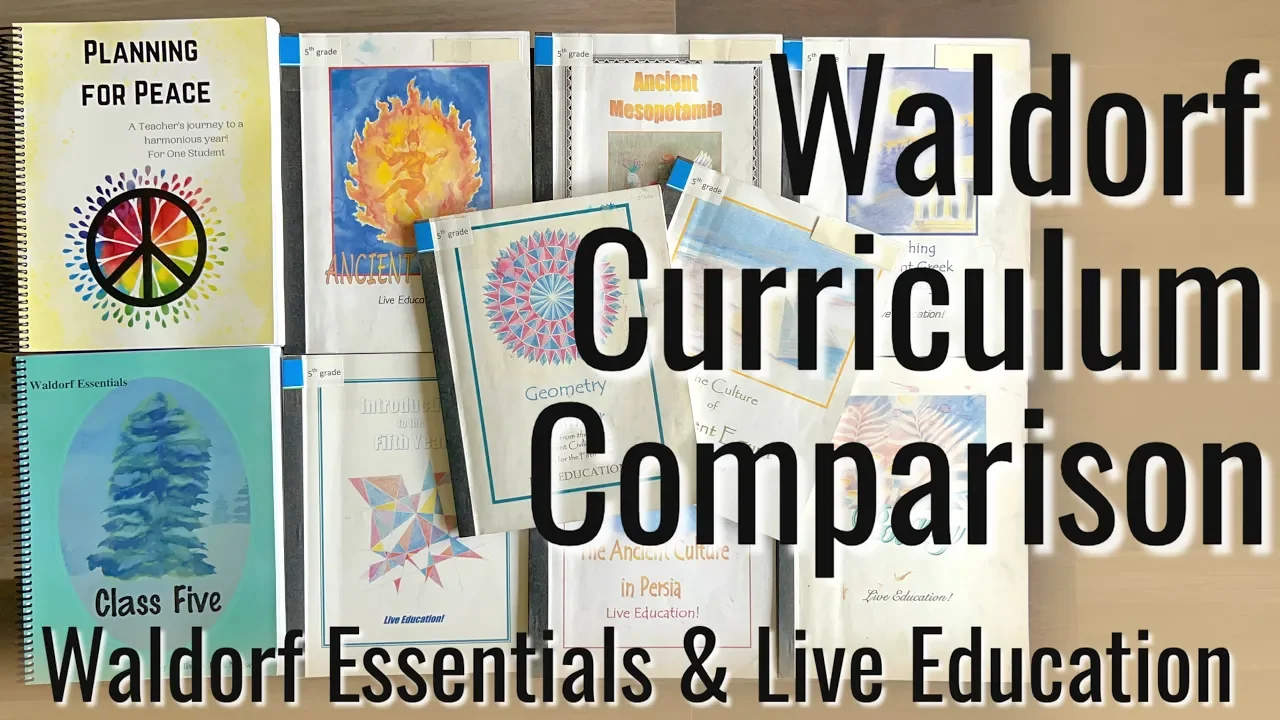
Curriculum Comparison of Waldorf Essentials and Live Education Grade 5
I compared the Live Education Grade 5 curriculum, which I have used for about twenty years, with the newly updated Waldorf Essentials Class 5 curriculum created by Melissa for Waldorf Essentials. Live Education was written by Waldorf-trained classroom teachers and follows the traditional Waldorf pedagogy very closely, offering extensive teacher content and support. Waldorf Essentials is written by a homeschooling Waldorf parent and is designed to be beautiful, practical, and user-friendly, with guidance, coaching, and a digital option that makes it easier to access and apply at home.
-
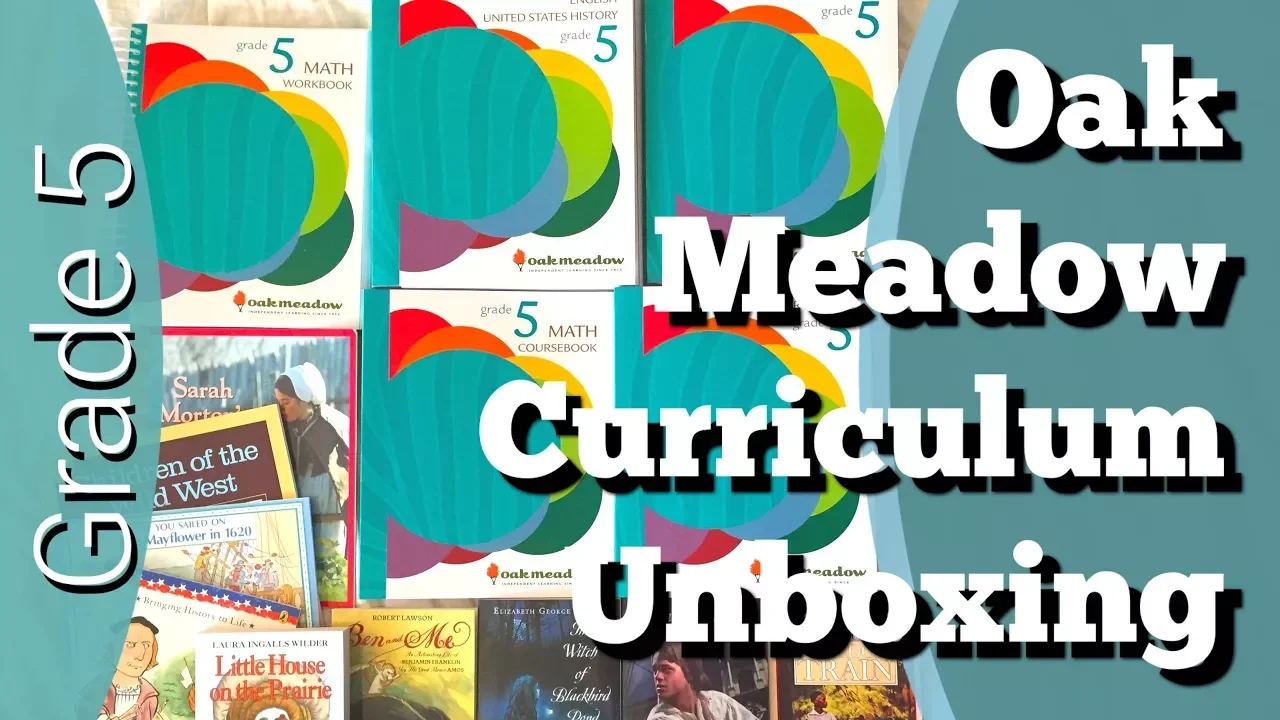
Oak Meadow Curriculum Unboxing | 5th Grade Curriculum Choices
Recently, Oak Meadow sent me the 5th grade curriculum to add to our charter school's resource center for families to use. Before making it there, I was given the opportunity to share the curriculum with you. Today's video is the unboxing, but there will be another video to follow with more details.
-

5th Grade | Oak Meadow & Live Education Comparison
Having trouble choosing a curriculum? I used to think Oak Meadow was a Waldorf inspired curriculum, but looking at the 5th grade curriculum, I think it's far more traditional than Waldorfian. If you want a Waldorf curriculum, I think the Live-Education curriculum is spot on. I'll compare both curricula for 5th grade so you can get a better idea how both curricula are laid out.
-
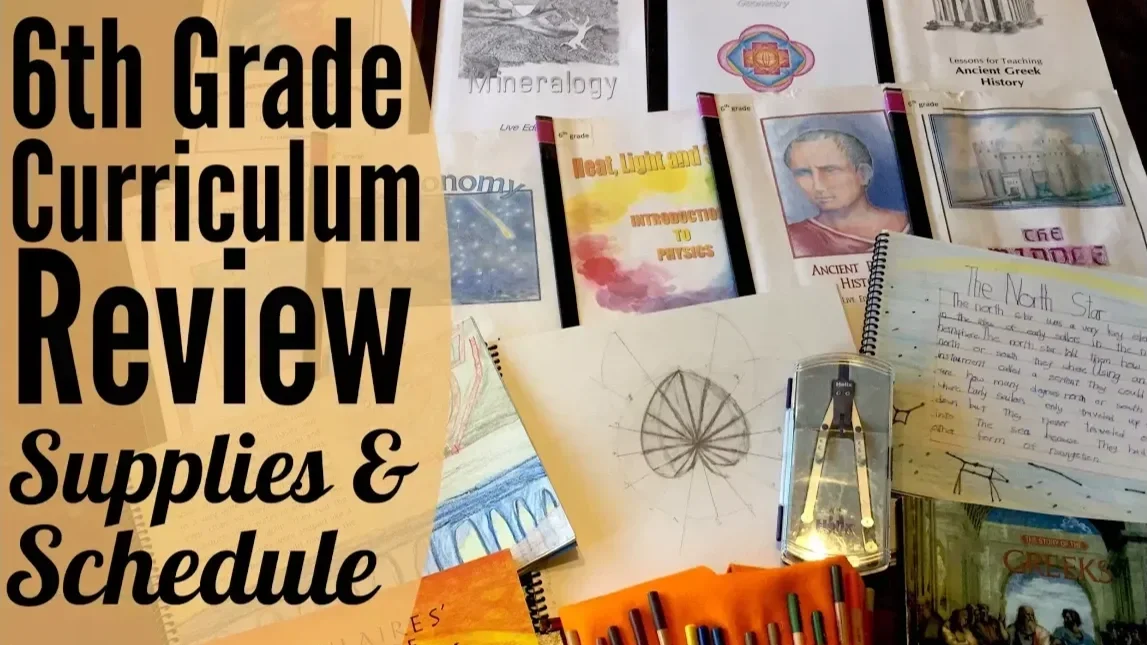
6th Grade Waldorf Homeschool Curriculum | Grade 6
Want a lively, interactive and unique curriculum option for your 6th grader? The Live-Education 6th grade curriculum may be what you're looking for. This year, the curriculum continues to be both responsive to the needs and development of the student as well as progresses with the lessons that were covered the previous year.
-

7th Grade Waldorf Curriculum | Live Education
This is the Live-Education 7th grade Waldorf curriculum. It comes with several main lesson blocks: Perspective Drawing, Renaissance Biographies, Creative Writing, The Age of Discovery, Algebra, Physics and European Geography. The curriculum also comes with an introduction to the 7th year as well as recommendations for other main lessons blocks. This year you'll need several new supplies that were not needed before like the material for physics. Some supplies you'll need that you may have already purchased are a compass, fountain pen, main lesson books, color pencils, watercolors, drawing paper, watercolor paper and graph paper.
Curriculum Review | 1st Grade | Waldorf Inspired
I have to say, I wasn't expecting this. I know Oak Meadow has done an overhaul of their curriculum. They've updated, revised and tweaked their long standing success curriculum. I admit that I wasn't as taken by the 5th grade curriculum which Oak Meadow sent to me last year to review. That curriculum is with our charter school, as it was not sent to me in exchange for my review or video or blog post. This time around, my sister purchased the first grade curriculum for her son. Feeling overwhelmed and hesitant as to whether or not this was a good curriculum, she asked me to review it and share my thoughts with her. "Of course!" I said. Better yet, I'll share my thoughts with you, too.
First off, I'm impressed. Like very impressed. The curriculum is beautiful, seemingly easy to use, informative, and still retains some aspects of the Waldorf educational philosophy. The curriculum comes with some early readers and a word families booklet. In addition to the course book, the curriculum has a resource guides with all the stories needed to compliment the lessons in the core subjects. I'm most impressed with the record manual which includes easy step by step instructions on how to use the recorder so the teacher and student can gain this skill. It even looks user friendly for non-musical types who have no experience with reading or playing music.
If you want a traditional approach with a Waldorf flare, this curriculum may be the one for you. There are some materials which can be purchased separately like other resources materials that will help you achieve homeschool and teaching success as well as the supplies you'll need for school such as knitting needles, crayons, main lesson books and more.
You can check out my review of Oak Meadow's 5th grade curriculum here.
Want to see the old curriculum compared to the Live-Education curriculum? Check it out here.
Here's the Grade 5 Live Education curriculum review.
Check out the complete playlist of curriculum reviews on the Pepper and Pine channel.
Find more information at the Oak Meadow website.
MOVING BEYOND THE PAGE | Literature Based
4th & 5th Grade Curriculum Choices
If you want a literature-based all inclusive curriculum, Moving Beyond The Page may be the curriculum you're looking for. This curriculum integrates language arts, science, and social studies together using literature as the 'textbooks'. An independent math curriculum, such as Right Start Math, is suggested, and the website sells that separately.
For the 8-10 year bracket, there are four concepts to span the year, each with three units each. Each unit has about two workbooks with about 10 lessons each. Each lesson has multiple activities which are worksheet based. The curriculum also comes with a science kit which has dozens of science projects, experiments and activities all neatly packed and labeled with the concept, unit, lesson and activity making the hands-on portion of this curriculum super easy to use and incorporate into the curriculum.
The literature for the language arts program complements the science unit or social studies unit making this an interdisciplinary curriculum.
Find more info about the Moving Beyond the Page curriculum here.
MOVING BEYOND THE PAGE | Literature Based
6th & 7th Grade Curriculum Choices
If you want a literature-based all inclusive curriculum, Moving Beyond The Page may be the curriculum you're looking for. This curriculum integrates language arts, science, and social studies together using literature as the 'textbooks'. An independent math curriculum, such as Right Start Math, is suggested, and the website sells that separately. For the 11-13 year bracket, there are two semesters that span the year, each with five units each. Each unit takes about 3-4 weeks to complete. Each unit has about three workbooks with about 10 lessons each. Each lesson has multiple activities which are worksheet based. The curriculum also comes with a science kit which has dozens of science projects, experiments and activities all neatly packed and labeled making the hands-on portion of this curriculum super easy to use and incorporate into the curriculum. The literature for the language arts program complements the science unit or social studies unit making this an interdisciplinary curriculum.
Waldorf Kindergarten Curriculum | Seasons
This video covers the four season books that are included in the Waldorf Kindergarten curriculum from Live-Education.
We use the Live-Education Waldorf curriculum as inspiration for grades K-8th. Today, I'm covering three of the seven books that come in the KG curriculum: Folk and Fairy Tales, The First Seven Years and Introduction to KG. You can find the curriculum and more pictures at Live-Education's website.
Folk and Fairy Tales, The First Seven Years and Introduction to KG.
In a Waldorf curriculum, the day follows a rhythm as does the week and the season. Each day of the week is devoted to a grain, color and activity, for instance Monday's color is purple and the grain in rice. Washing and cleaning dominate Monday's activities, while Tuesday's color is red and the grain is oats. Tuesday's breakfast may be oatmeal topped with red strawberries. Tuesday's activity may be bread making or soup making. Each week the same pattern is repeated, but instead of strawberries, raspberries top the oatmeal. When the seasons change, so do the activities and celebrations. May Day, singing, outdoor activities and gardening dominate spring time, while candle making, baking and holidays dominate the winter.
Toys are simple and made of natural materials with wool being preferred over cotton and wood being preferred over metal. There is a tendency towards items made from living things over non-living things, so wool is from a sheep while cotton is from a plant and wood is from a tree while metal is inorganic. Plastic is highly discouraged. Natural light is favored over artificial light and candle light is preferred over oil, as candles are made from beeswax. Colors are natural and derived from plants.
Playthings include but are not limited to silks, faceless dolls (allows for greater imagination), wooden toys and blocks, wooden or felt swords and shields, child-sized versions of tools such as broom, mop, ironing board, kitchen, garden, wood shop, etc. and other dolls like finger puppets or peg dolls.
Activities and play time are open ended and lend themselves well to creative imagination. Art is focused on water-coloring and drawing with block crayons in yellow, blue and red on large pieces of paper or watercolor paper (typically 22"x17"). High end supplies are always encouraged and are a staple to the Waldorf philosophy.
No academics are present in kindergarten.
Festivals and celebrates mark important milestones in the world of five and six year olds.
Some books I recommend:
Children and Their Temperaments by Marieke Anschutz
Storytelling & The Art of Imagination by Nancy Mellon
Healing Stories for Challenging Behavior by Susan Perrow
You Are Your Child's First Teacher by Rahima Baldwin
The Education of the Child by Rudolf Steiner
The Kingdom of Childhood by Rudolf Steiner
The following are the materials we got from A Child's Dream:
Art Tissue Paper -
Stockmar Beeswax Crayons - 16 Colors, Block -
Stockmar Beeswax Crayons - 16 Colors, Stick -
Beeswax Candle Rolling Kit -
Wood Cup (4) -
Wood Egg (6) -
Olive Wood Nutcracker -
Paint Jar Holder & 6 Jars -
Crafts Through The Year by Berger -
Holland Wool Felt Warm Colors, Yards + Cuts -
Holland Wool Felt Cool Colors, Yards + Cuts -
Holland Wool Felt Neutral, Baby Colors, Yards + Cuts -
Stockmar Modeling Beeswax - 12 Colors -
Come Follow Me CD - Volume One -
Come Follow Me CD - Volume Two -
Finger Puppet Bases (5) -
Wood Peg Doll - Large (10) -
Wood Peg Doll - Female (8) -
Smooth Mohair Yarn - Undyed -
Lyra Opaque Watercolor Paint Set - 24 Colors -
Beeswax Pumpkin Candle -
Sail Boat Building Kit -
Wind Car Building Kit -
Respect the Spindle Book by Abby Franquemont -
Stockmar Watercolor Paints - Set -
Making Peg Dolls & More by Margaret Bloom -
Paper Suncatchers - Window Stars Kit -
Numerica - A Waldorf Book of Counting -
LMNOP Alphabet Book by Howard Schrager -
LMNOP Alphabet Wall Cards -
Mini Playhouse Kit -
Creative Silk Pack - Winter Night Sky -
Wood Gnome with Pipe Cleaner Arms -
Wood Doll with Pipe Cleaner Arms -
Wood Finger Puppet with Pipe Cleaner Arms -
Waldorf Kindergarten Curriculum
This video covers the four season books that are included in the Waldorf Kindergarten curriculum from Live-Education.
We use the Live-Education Waldorf curriculum as inspiration for grades K-8th. Today, I'm covering three of the seven books that come in the KG curriculum: Folk and Fairy Tales, The First Seven Years and Introduction to KG. You can find the curriculum and more pictures at Live-Education's website.
The other four books: autumn, winter, spring, and summer are covered in another video.
In a Waldorf curriculum, the day follows a rhythm as does the week and the season. Each day of the week is devoted to a grain, color and activity, for instance Monday's color is purple and the grain in rice. Washing and cleaning dominate Monday's activities, while Tuesday's color is red and the grain is oats. Tuesday's breakfast maybe oatmeal topped with red strawberries. Tuesday's activity may be bread making or soup making. Each week the same pattern is repeated, but instead of strawberries, raspberries top the oatmeal. When the seasons change, so do the activities and celebrations. May Day, singing, outdoor activities and gardening dominate spring time, while candle making, baking and holidays dominate the winter.
Toys are simple and made of natural materials with wool being preferred over cotton and wood being preferred over metal. There is a tendency towards items made from living things over non-living things, so wool is from a sheep while cotton is from a plant and wood is from a tree while metal is inorganic. Plastic is highly discouraged. Natural light is favored over artificial light and candle light is preferred over oil, as candles are made from beeswax. Colors are natural and derived from plants.
Playthings include but are not limited to silks, faceless dolls (allows for greater imagination), wooden toys and blocks, wooden or felt swords and shields, child-sized versions of tools such as broom, mop, ironing board, kitchen, garden, wood shop, etc. and other dolls like finger puppets or peg dolls.
Activities and play time are open ended and lend themselves well to creative imagination. Art is focused on water-coloring and drawing with block crayons in yellow, blue and red on large pieces of paper or watercolor paper (typically 22"x17"). High end supplies are always encouraged and are a staple to the Waldorf philosophy.
No academics are present in kindergarten.
Festivals and celebrates mark important milestones in the world of five and six year olds.
Some books I recommend:
Children and Their Temperaments by Marieke Anschutz
Storytelling & The Art of Imagination by Nancy Mellon
Healing Stories for Challenging Behavior by Susan Perrow
You Are Your Child's First Teacher by Rahima Baldwin
The Education of the Child by Rudolf Steiner
The Kingdom of Childhood by Rudolf Steiner
The following are the materials we got from A Child's Dream:
Art Tissue Paper -
Stockmar Beeswax Crayons - 16 Colors, Block -
Stockmar Beeswax Crayons - 16 Colors, Stick -
Beeswax Candle Rolling Kit -
Wood Cup (4) -
Wood Egg (6) -
Olive Wood Nutcracker -
Paint Jar Holder & 6 Jars -
Crafts Through The Year by Berger -
Holland Wool Felt Warm Colors, Yards + Cuts -
Holland Wool Felt Cool Colors, Yards + Cuts -
Holland Wool Felt Neutral, Baby Colors, Yards + Cuts -
Stockmar Modeling Beeswax - 12 Colors -
Come Follow Me CD - Volume One -
Come Follow Me CD - Volume Two -
Finger Puppet Bases (5) -
Wood Peg Doll - Large (10) -
Wood Peg Doll - Female (8) -
Smooth Mohair Yarn - Undyed -
Lyra Opaque Watercolor Paint Set - 24 Colors -
Beeswax Pumpkin Candle -
Sail Boat Building Kit -
Wind Car Building Kit -
Respect the Spindle Book by Abby Franquemont -
Stockmar Watercolor Paints - Set -
Making Peg Dolls & More by Margaret Bloom -
Paper Suncatchers - Window Stars Kit -
Numerica - A Waldorf Book of Counting -
LMNOP Alphabet Book by Howard Schrager -
LMNOP Alphabet Wall Cards -
Mini Playhouse Kit -
Creative Silk Pack - Winter Night Sky -
Wood Gnome with Pipe Cleaner Arms -
Wood Doll with Pipe Cleaner Arms -
Wood Finger Puppet with Pipe Cleaner Arms -
1st Grade Waldorf Curriculum
First grade in a Waldorf school begins at seven years of age, after the change of teeth has begun. Other notable differences about a the first grade curriculum is the story aspect of each lesson, even when you present the child with her first recorder, you present it along with a story. Stories are an important part of the Waldorf curriculum. It's what connects the child to the information. The information comes to life through the story told by the teacher. You may also notice an absence of textbooks, workbooks and even picture or chapter books. There are no textbooks because the teacher teaches the material (she does her research prior to teaching), there are no workbooks because the students make their own as the lessons progress by copying the chalk drawings on the chalkboard made by the teacher and adding a sentence or two copied from the board or dictated to the student. The students make their first readers with drawings and complete simple sentences which they then read themselves. The world of numbers is also introduced with stories to complement the introduction of each number.
Does your child already know the ABC's and the numbers before entering grade one? Probably. Most kids pick them up along the way, but don't overlook this beautiful presentation of the numbers and letters, there's more to the lesson than just the technical and mechanical acquisition of the numbers and letters. The value is a deeper connection to learning and sets the foundation for how information and skills will be taught and acquired throughout the grades. There is reverence and honor in every aspect of the Waldorf curriculum, down to how the crayons are used and stored to how one transitions from one activity to the next.
The curriculum I am presenting to day is from Live-Education.
We homeschool using many different yet congruent philosophies including Waldorf, TJed, and Charlotte Mason, but use the curriculum from Live-Education for inspiration.
Some books I recommend:
Children and Their Temperaments by Marieke Anschutz
Storytelling & The Art of Imagination by Nancy Mellon
Healing Stories for Challenging Behavior by Susan Perrow
You Are Your Child's First Teacher by Rahima Baldwin
The Education of the Child by Rudolf Steiner
The Kingdom of Childhood by Rudolf Steiner
You can check out my other Live-Education curriculum reviews:
Kindergarten, Grade 1, Grade 2, Grade 3, Grade 4 , Grade 5, Grade 6, Grade 7, and Grade 8 (coming soon).
Curriculum Comparison | Oak Meadow VS. Live Education | Waldorf Homeschool
Oak Meadow and Live-Education are Waldorf inspired curricula, but what's the difference between the two and which one is more authentic to the Waldorf philosophy? I'm comparing the kindergarten curriculum for both Oak Meadow and Live-Education to give you an in depth look at how each curriculum is set up, what books come with each and how user friendly they are.
For more information on the Live-Education KG curriculum as well as recommended supplies and a growing list of KG tutorials, check out this playlist.
For a look at the updated version of Oak Meadow 1st grade curriculum.
For a review of Oak Meadow KG and 1st grade.
You can find the kindergarten curriculum for Live Education on their website.
Grade 1 Waldorf Essentials Curriculum Review + Comparison with Live Education | 1st Grade
It's probably the biggest homeschooling decision you're going to make: Choosing a curriculum. When you've finally narrowed down you want to do a Waldorf approach, next you have to sort through the Waldorf curricula that are available. Today I'm walking you through the Waldorf Essentials curriculum for first grade with a comparison to the Live-Education curriculum also for grade one.
Here are some additional thoughts:
-The Live-Education curriculum is written by Waldorf teachers who have gone through training to become teachers if Waldorf schools. They have taught for many years in a classroom setting and bring as close to a Waldorf education to your home in the form of their curriculum.
-The Waldorf Essentials curriculum has been written, tested and refined by homeschooling parent with years of experience teaching her own children and advising homeschooling families.
-Both curricula come with support in the form of consultations and/or mentorship.
-Waldorf Essentials comes with additional online resources (it used to be a dvd, but now all the media is online)
-The curriculum portion of Waldorf Essentials is minimal compared to Live-Education and may need additional resources to supplement the curriculum like artwork for each lesson which is a great portion of the first grade curriculum
-The Live-Education curriculum comes with everything you need including original color artwork by artist Bruce Bischop
-Waldorf Essentials has a running lesson plan with the first block being letters of the alphabet mixed with form drawing. Though main lesson blocks can be moved around, it is more difficult to do so. It is written and arranged for families living in the northern hemisphere.
-The Live-Education curriculum comes with distinct books for each main lesson, so moving blocks around is easy. It is advised that you begin with form drawing.
-Both curricula comes with general information about setting up the school day and school year, how to do a main lesson and the waldorf philosophy.
-The Live-Education curriculum comes with additional information at the introduction of each main lesson block as well as additional resources.
-The Waldorf Essentials curriculum comes with handwork patterns at the back of the back.
-Live-Education is only sold in color printed hardcopies
-Waldorf Essentials can be purchased as a digital curriculum as well as simply printed.
-Waldorf Essentials appears simple
-Live-Education appears professional
You can find more information on Waldorf Essentials here.
You can find more information on Live-Education here.
Melisa also added the following in a comment:
"EVERY purchase comes with online content that is free and easily available on the site. We have videos there to help you as the homeschooler apply the curriculum, pictures from lessons, etc. (this replaced the DVD). Every curriculum also comes with a free hour of consulting on the phone."
Disclaimer and personal opinions: I use the Live-Education curriculum and find it to be a superior curriculum to Waldorf Essentials in every way, it is more authentic to the Waldorf philosophy and very professional. From what I've seen and experienced, art is as important to the content of the curriculum, and there are only very simple form drawings and computer generated stick drawings in the Waldorf Essentials curriculum. Considering that artwork accompanies each lesson in first grade and that watercoloring is done often in first grade, making up half the curriculum, I find the Waldorf Essentials curriculum very lacking in this area.
Please leave your thoughts in the comment section. If there have been updates to the curriculum, I will do my best to add them here. Since making and posting this video, there has been a price increase to the Waldorf Essentials curriculum
Homeschool Curriculum Comparison 2nd Grade Curriculum Choices | Grade 2 Waldorf
It's one of the hardest things choosing a curriculum. Today, I'm sharing two boxed curricula that are Waldorf inspired. One more so than the other, yet one is more user-friendly than the other.
You can see other curriculum reviews here.
I'm featuring the old version of the Oak Meadow 2nd grade curriculum you can only find second hand, but you can find the updated version of the curriculum at the Oak Meadow website.
The Second grade curriculum for Live-Education was updated in 2010 and can be found here.
This overview compares two Waldorf-inspired second-grade curricula: Live Education and an older edition of Oak Meadow. The updated Oak Meadow for upper grades diverges significantly from Waldorf, but this older second-grade edition shows more overlap. Because Oak Meadow no longer sells this version, it is typically found secondhand.
Live Education includes: Nature Stories, Nature Science, Collection of Golden Legends (source book), Animal Fables from Around the World, Teaching Animal Fables, Teaching the Golden Legends, Nature Arithmetic and Form Drawings, and Legends of the Buddha with Animal Fables. These are teacher resources, not student workbooks, so the pages are dense and the font is small. The intent is to guide lesson presentation rather than provide consumable worksheets.
Oak Meadow centers on a Second Grade Syllabus divided into 36 weekly lessons. Each week integrates multiple subjects aligned with assigned stories and suggests music, crafts, and health (the health book may be separate). Coordinating books include Ben and Meg (first reader), Just So Stories, Animal Stories, and Your First Book of Nature Crafts; supplies are purchased separately. Oak Meadow pegs second grade around age seven, while the Waldorf second grade is typically around age eight.
The difference: Live Education follows rotating main-lesson blocks (three to four weeks per theme) with general guidance for opening activities, leaving more planning flexibility. Oak Meadow is a consolidated, “all-in-one” format with larger fonts, more white space, and weekly plans in one place, including morning activities. In Live Education, stories are the spine for other subjects, Native American tales feed nature science; Golden Legends support writing and grammar, with a broad mix of fables from Aesop, India, Africa, China, and Buddhist traditions.
For both curricula, families will still need main-lesson books and quality crayons or colored pencils (stick and block crayons suit second grade). Oak Meadow’s dedicated craft book simplifies adding handwork, while Live Education invites crafts and skills to be woven into the block work. Additional details and links, including sources for Live Education and the updated Oak Meadow edition, can be provided or referenced as needed.
2nd Grade Waldorf Curriculum | Grade 2
Taking a look at the Live-Education 2nd grade Waldorf curriculum you'll find a unique approach to the subjects typically found in most curricula for this age. I will also give you a peek at the main lesson books my son made. There are no workbooks or textbooks in this curriculum, so you're going to have to actively participate to make this curriculum work. It's definitely teacher-led and all lessons are delivered by the teacher in an oral manner. The teacher familiarizes herself with the material (provided in the curriculum), then delivers the lesson. From experience, I know I didn't always have the time to prepare ahead of time, so on many occasions, I would read directly out of the source book (also provided). You may also choose to use literature of your own choosing as we did during 2nd grade. We still used the same lessons provided in the curriculum but used different stories to base the lessons on. We used stories that were similar to the ones provided.
This is a boxed curriculum with everything provided that you'll need for the year with the exceptions of your supplement materials which include but are not limited to main lesson books, art supplies, a recorder and craft supplies. These items can be made or purchased separately.
You can see what main lesson books are by clicking here.
Want to see if this curriculum is right for you?
You can find the 2nd grade Waldorf curriculum here.
You can check out my other Live-Education curriculum reviews:
Kindergarten, Grade 1, Grade 2, Grade 3, Grade 4 , Grade 5, Grade 6, Grade 7, and Grade 8 (coming soon).
3rd Grade Waldorf Homeschool Curriculum
When I first saw the third grade Waldorf curriculum, I wasn't interested in using it because there was so much content I didn't intend to use. A few years later, I realized the wisdom behind why these particular main lesson blocks are chosen for the 9-year-old student. I'll share those reflections in the video as well as give you an in-depth review of the Live Education! curriculum with tips of how to use it.
We've gone through this curriculum before so you can to see my children's main lesson books. As we used our own resources for many of the main lesson blocks, you'll see how we tailored this year's curriculum to suit our religious needs and cultural background.
You'll need a number of supplies for the third year including the basics of main lesson books, additional resource books, crayons and color pencils, watercolors and watercolor paper as well as the materials for handwork projects. You can see the complete list of supplies for the third grade.
Handwork projects are quintessential to the Waldorf curriculum. When done right they complement the curriculum and enhance the student's educational experience. Check out the ones we've done for third grade.
While you don't need any additional resource books for this year save a few for the lesson on Hebrew Myths and Culture, I do have a number of additional books that round out the 3rd grade curriculum. The bulk of them were used for the main lessons on Hebrew Myths and Culture. We used culturally relevant texts and religious books for those main lesson blocks. I share more resources that will come in handy for the parent/teacher, but they are by no means necessary to use the curriculum successfully.
There are a number of hands-on projects and activities that are well suited for the third grade. I show you some of the projects we've done as well as solutions for some of the projects that may otherwise be too complicated to do.
You can find the Grade 3 Live Education! curriculum by visiting the Live-Education! website.
Waldorf Grade 4 | Complete Overview
Welcome to the Grade 4 blog post where you can find many of the resources I share for grade 4, many of which are Waldorf inspired. Grade 4 is typically students 10-12 years old, or students who have just completed or just about to complete their ‘nine-year-change’ which is a major developmental change that occurs in the 7 years between the ‘age of awareness’ (roughly around 7 years old) and puberty (which most children reach by age 14). The Waldorf curriculum supports children as they develop through these stages with lessons and stories that resonate with the child and support their changing needs. While stories are carefully chosen, and lessons purposefully constructed, understanding the reasons behind the methodology will allow you to choose stories and lessons that are relevant for your child based on your culture, heritage, religion or residence in the world. The Waldorf curriculum I primarily use is by Live Education and the trajectory of the curriculum is western and Euro-centric. In my years of using the curriculum, I have opted to both use the curriculum (and sometimes expand it into unit studies), and create my own main lesson blocks or stories to suit our religious needs. I encourage you to do the same and here’s how you can.
The Grade 4 curriculum by Live Education comes complete with several main lesson blocks that help support the development of the 10 year old child. Grade 4 is intended for children ages 10-12 approximately. The main lesson blocks in year 4 are the following: The Norse Myths, Beowulf, the Kalevala, Imaginative Math and Fractions, Man and Animal, Local geography, Drawing Animals, The Introduction to the Fourth Year Curriculum, The World of Animals (companion volume), Teaching Grammar with Imagination. Additional books are recommended for some of the main lesson blocks which can be found in the Introduction to the Fourth Year Curriculum book.
Blocks are rotated throughout the year with main lessons lasting 2 hours (and sometimes more), with blocks lasting 3 or 6 weeks. I prefer to do my grammar and math block in the fall, history in the winter and science in the spring, but that is a personal preference.
Grammar Resources
First Language Lessons Level 4 Student Workbook: Student Workbook Workbook Edition
Spelling by Hand: Teaching Spelling in a Waldorf School, a Guide for Class Teachers
The Only Grammar Book You’ll Ever Need: A One-Stop Source for Every Writing Assignment
Actually, the Comma Goes Here: A Practical Guide to Punctuation
Grammatically Correct: The Essential Guide to Spelling, Style, Usage, Grammar, and Punctuation
The Perfect English Grammar Workbook: Simple Rules and Quizzes to Master Today’s English
Norse Mythology Resources:
D’Aulaires’ Book of Norwegian Folktales adopted and illustrated by Ingri and Edgar Paris D’Aulaires
You Wouldn’t Want to be a Viking Explorer written by Andrew Langley and illustrated by David Antram
Tara Ireland’s royal board game (not Nordic, but I included it in this unit)
Man & Animal (Zoology) Resources
Nature Anatomy: The Curious Parts and Pieces of the Natural World
Ocean Anatomy: The Curious Parts & Pieces of the World under the Sea
Professor Noggin’s Birds of North America Trivia Card Game – an Educational Based Card Game for Kids
Professor Noggin’s Wildlife of North America Trivia Card Game
Shanyaak’utlaax – Salmon Boy (Baby Raven Reads) English and Tlingit Edition
DK Eyewitness Books: Fish: Discover the Amazing World of Fish
DK Eyewitness Books: Bird: Discover the Fascinating World of Birds
The Burgess Animal Book for Children: Mammal and Nature Education Storybook for Kids
Handwork Resources
DMC 117F25HDC Embroidery Floss (for adults rather than students)
DMC 115 3-606 Pearl Cotton Thread, Bright Orange/Red (for students, thicker and pearl)
Clover Gold Eye Chenille Needles, 1 Count (Pack of 1), Size 20 6/Pkg
Needle Felting Wool Carded Batts Shade Pack 100 Grams 3.5 Oz -Green
Eurythmy Movements and Meditations: A Journey to the Heart of Language
Geography & History Resources
California Gold Rush, Grades 4 – 7 (American History Series)
John Sutter: California Pioneer (Primary Sources of Famous People in American History)
Keepers of the Earth: Native American Stories and Environmental Activities for Children
Gold! Gold from the American River!: January 24, 1848: The Day the Gold Rush Began
10 Days in The USA | Family Road Trip Board Game for All Ages
California’s Sights and Symbols (Kid’s Guide to Drawing America)
Waldorf Curriculum | Live Education | Curriculum Review | 5th Grade
The Live-Education 5th grade curriculum has an emphasis on ancient history, botany and geometry. But just because a formal language arts program may be absent from the curriculum, it doesn't mean it's absent all together. In fact, you'll be surprised at how much writing, dictation and copywork occur with the history and science main lesson blocks. And I am sure you've never seen an introduction to geometry quite like this before.
There are additional materials you'll need for the school year. In addition to a source book for each subject area (you could do without one, but with some subjects, it's highly recommended), you'll need main lesson books, color pencils and the Key to Curriculum workbooks for fractions and decimals.
While there is a single teacher for grades 1st-8th in a Waldorf school, there are also other teachers that a student will interact with on a daily and weekly basis. There are additional lessons that are taught by specialized teachers. For instance, there are foreign language teachers who teach twice a week in the afternoons after the main lesson has been completed by the classroom teacher, there are handiwork teachers, eurythmy teachers, and music teachers who also teacher regularly throughout the year. This provides a nice balance of role models throughout a child's experience at school.
The same can be achieved at home. You may choose to have additional classes for your child and thereby your child will be exposed to other teachers other than yourself.
The same can be achieved at home. You may choose to have additional classes for your child and thereby your child will be exposed to other teachers other than yourself.
You can see the complete lessons for Botany by clicking here.
You can also see the complete lessons for Geometry by clicking here.
Though we didn't do a main lesson for Ancient Egypt recently, we did do an Ancient Egypt Unit Study.
We love the Key To Curriculum Series, and the Live-Education curriculum suggests supplementing the 5th grade curriculum with Key to Fractions and Decimals (and I add percents as well). See my review here.
You can find Year 5 Live-Education curriculum here.
Recently, Oak Meadow sent me the 5th grade curriculum to add to our charter school's resource center for families to use. Before making it there, I was given the opportunity to share the curriculum with you.
In addition to the curriculum itself, there were several historical fiction, history picture books and other historical books to supplement the curriculum. The math portion of the curriculum has been revised and the whole look and style of the curriculum has been updated.
Number Chains is a great little book that can be used for mental math. Questions are multiple step (about 6-7 steps each) and can be done orally (delivered by the teacher) or independently by the student.
You can find more of my curriculum videos here.
You can find the Oak Meadow curriculum on their website.
Curriculum Comparison of Waldorf Essentials and Live Education Grade 5
While I haven’t used the Waldorf Essentials curriculum, I’m sharing a comparison of what each curriculum offers. This is a visual comparison with my thoughts on our experience with the Live Education curriculum.
We have used Live Education Waldorf curriculum for 20 years.
You can find Melisa at Waldorf Essentials all over Social media and on the Waldorf Essentials website.
Find the complete Live Education Waldorf curriculum from KG to grade 8 on the Live Education website.
I compared the Live Education Grade 5 curriculum, which I have used for about twenty years, with the newly updated Waldorf Essentials Class 5 curriculum created by Melissa for Waldorf Essentials. Live Education was written by Waldorf-trained classroom teachers and follows the traditional Waldorf pedagogy very closely, offering extensive teacher content and support. Waldorf Essentials is written by a homeschooling Waldorf parent and is designed to be beautiful, practical, and user-friendly, with guidance, coaching, and a digital option that makes it easier to access and apply at home.
I have used Live Education through many grades with my four children, so I know it well. Although I have not taught from Waldorf Essentials (nor do I plan to), you can see that it feels more approachable for a homeschooling family and for teachers/parents who have less familiarity with Waldorf education. Live Education is very thorough, more intensive and assumes that the parent or teacher has a strong background in the Waldorf approach.
Waldorf education as a whole is based on the child’s developmental stages, not just on academic skill level. The stories are the foundation of the lessons, and academics are built around them. I plan my school year rhythmically: head subjects like math and grammar in the fall, history and writing in the winter, and science in the spring. Each main lesson unfolds over several days so the material can rest and deepen. I prefer a three-day lesson rhythm where I tell the story one day, revisit it with writing or drawing the next, and complete it with an activity on the third. Although the Waldorf ideal is oral storytelling, I often read directly from the lesson books, especially when I have limited time.
Live Education Grade 5 includes a helpful introduction that explains the child’s development and offers examples of scheduling and block organization. The grade’s main lesson blocks include Botany, Geometry, and five history blocks: Ancient Greek Mythology, Mesopotamia, Persia, Ancient India, and Ancient Egypt. The books are teacher-focused and contain lesson content, activities, dictation options, and narration suggestions. Geometry and Botany are large enough to divide into two shorter blocks, and each history block can run three to four weeks. I find that Ancient Egypt is the easiest to support with outside resources, while Ancient Persia can be harder to find materials for. I prefer to use watercolor and chalk pastel with the ancient stories because they suit the mood of myth and legend.
The Waldorf Essentials Class 5 curriculum contains the entire year in one spiral-bound book, organized chronologically through the blocks. It moves from Math to Geography and Ancient Cultures, back to Math, then on to new culture studies. The updated version includes full-color illustrations and photographs, making it easy to copy artwork for main lesson books. It also provides notes on home rhythm, meal planning, festivals, and how to work with mixed ages. There is a digital version available, which is useful for international families or those who prefer electronic access.
Melissa’s companion planner, Planning for Peace, is almost twice as thick as the curriculum itself. It includes block planning, meal plans, calendars, temperament studies, meditation prompts, and other tools that help keep the homeschool organized and intentional. I find it valuable because it recognizes that homeschoolers manage both teaching and home life simultaneously.
In comparing the two, Live Education is more expensive, typically in the mid-hundreds per grade, but it is also more thorough and teacher-centered. Waldorf Essentials feels lighter to implement and more affordable, especially for those new to Waldorf education. Live Education provides a deep, faithful presentation of Waldorf pedagogy, while Waldorf Essentials offers a flexible, parent-friendly approach that helps families bring the spirit of Waldorf into daily life without feeling overwhelmed.
Both programs can be enhanced by adding cooking projects, handwork, nature walks, and a few well-chosen picture books or historical fiction titles. I have learned that a few intentional additions enrich the lessons far more than a long list of extras. Live Education offers depth and rigor for experienced teachers, while Waldorf Essentials provides beauty, support, and realistic rhythm for home educators.
Oak Meadow Curriculum Unboxing | 5th Grade Curriculum Choices
Recently, Oak Meadow sent me the 5th grade curriculum to add to our charter school's resource center for families to use. Before making it there, I was given the opportunity to share the curriculum with you. Today's video is the unboxing, but there will be another video to follow with more details. There were many things I wasn't sure of while sharing this materials in this video, and I will be taking a little time to review these materials to share in a later video as well as compare them to the Live-Education Waldorf curriculum.
I was immediately impressed at the materials that came in the curriculum. In addition to the curriculum itself, there were several historical fiction, history picture books and other historical books to supplement the curriculum. The math portion of the curriculum has been revised and the whole look and style of the curriculum has been updated.
You can find more of my curriculum videos here.
You can find the Oak Meadow curriculum on their website.
5th Grade Curriculum Choices | Homeschool | Oak Meadow and Live Education Comparison
Having trouble choosing a curriculum? I used to think Oak Meadow was a Waldorf inspired curriculum, but looking at the 5th grade curriculum, I think it's far more traditional than Waldorfian. If you want a Waldorf curriculum, I think the Live-Education curriculum is spot on. I'll compare both curricula for 5th grade so you can get a better idea how both curricula are laid out.
The Waldorf curriculum we use doesn't have a teaching manual and textbooks. There are no workbooks. We might not even see regular subjects as you'd expect in other traditional methods and the scope and sequence may be new to you. So what do you get when you order a Waldorf curriculum and what will your children do?
I don't think you've seen a curriculum like this before. The Live-Education 5th grade curriculum has an emphasis on ancient history, botany and geometry. But just because a formal language arts program may be absent from the curriculum, it doesn't mean it's absent all together. In fact, you'll be surprised at how much writing, dictation and copywork occur with the history and science main lesson blocks. And I bet you've never seen an introduction to geometry quite like this before.
There are additional materials you'll need for the school year. In addition to a source book for each subject area (you could do without one, but with some subjects, it's highly recommended), you'll need main lesson books, color pencils and the Key to Curriculum workbooks for fractions and decimals.
While there is a single teacher for grades 1st-8th in a Waldorf school, there are also other teachers that a student will interact with on a daily and weekly basis. There are additional lessons that are taught by specialized teachers. For instance, there are foreign language teachers who teach twice a week in the afternoons after the main lesson has been completed by the classroom teacher, there are handiwork teachers, eurythmy teachers, and music teachers who also teacher regularly throughout the year. This provides a nice balance of role models throughout a child's experience at school.
The same can be achieved at home. You may choose to have additional classes for your child and thereby your child will be exposed to other teachers other than yourself.
You can see the complete lessons for Botany by clicking here.
You can also see the complete lessons for Geometry by clicking here.
Though we didn't do a main lesson for Ancient Egypt recently, we did do an Ancient Egypt Unit Study.
We love the Key To Curriculum Series, and the Live-Education curriculum suggests supplementing the 5th grade curriculum with Key to Fractions and Decimals (and I add percents as well). See my review here.
You can find Year 5 Live-Education curriculum here.
Recently, Oak Meadow sent me the 5th grade curriculum to add to our charter school's resource center for families to use. Before making it there, I was given the opportunity to share the curriculum with you.
In addition to the curriculum itself, there were several historical fiction, history picture books and other historical books to supplement the curriculum. The math portion of the curriculum has been revised and the whole look and style of the curriculum has been updated.
Number Chains is a great little book that can be used for mental math. Questions are multiple step (about 6-7 steps each) and can be done orally (delivered by the teacher) or independently by the student.
You can find more of my curriculum videos here.
You can find the Oak Meadow curriculum on their website.
6th Grade Waldorf Homeschool Curriculum | Grade 6
Want a lively, interactive and unique curriculum option for your 6th grader? The Live-Education 6th grade curriculum may be what you're looking for. This year, the curriculum continues to be both responsive to the needs and development of the student as well as progresses with the lessons that were covered the previous year.
The main lesson blocks this year include Grammar, Geometry (which continues the lesson from last year and yet compliments the main lesson blocks this year), introduction to algebra (this is an option I recommend waiting on until your student is in 7th, 8th or even 9th grade), Mineralogy, Introduction to Physics and Astronomy make up your science main lesson blocks, and Middle Ages, Ancient Roman History and Ancient Greek History make up your history units for the year. This is quite a packed year and you'll still want to make room for afternoon classes such as foreign language, music, physical movement and handwork.
In fact, you'll be surprised at how much writing, dictation and copywork occur with the history and science main lesson blocks, but it's nice to have a main lesson block in grammar which can be used as early at 5th grade all the way through to 8th grade.
There are additional materials you'll need for the school year. In addition to a source book for each subject area (you could do without one, but with some subjects, it's highly recommended), you'll need main lesson books, color pencils and the Key to Curriculum workbooks for fractions and decimals.
While there is a single teacher for grades 1st-8th in a Waldorf school, there are also other teachers that a student will interact with on a daily and weekly basis. There are additional lessons that are taught by specialized teachers. For instance, there are foreign language teachers who teach twice a week in the afternoons after the main lesson has been completed by the classroom teacher, there are handiwork teachers, eurythmy teachers, and music teachers who also teacher regularly throughout the year. This provides a nice balance of role models throughout a child's experience at school.
The same can be achieved at home. You may choose to have additional classes for your child and thereby your child will be exposed to other teachers other than yourself.
Check out my other Waldorf curriculum reviews:
You can also see the complete lessons for Geometry by clicking here.
Key to Curriculum Series review
You can find Year 6 Live-Education curriculum here.
Here are a list of hands-on projects we really enjoyed the first two times we did the Middle Ages unit:
7th Grade Waldorf Curriculum | Live Education
This is the Live-Education 7th grade Waldorf curriculum. It comes with several main lesson blocks: Perspective Drawing, Renaissance Biographies, Creative Writing, The Age of Discovery, Algebra, Physics and European Geography. The curriculum also comes with an introduction to the 7th year as well as recommendations for other main lessons blocks. This year you'll need several new supplies that were not needed before like the material for physics. Some supplies you'll need that you may have already purchased are a compass, fountain pen, main lesson books, color pencils, watercolors, drawing paper, watercolor paper and graph paper.
This video details the books and supplies used for 7th grade, as well covers the basics of the homeschool day from planning to block rotation.
The homeschool schedule proceeds like this: Begin the day with morning activities. These range from mental math and daily grammar to physical movement and song.
Following the morning activities which take anywhere from 20 minutes to an hour, you can begin your main lesson. The main lesson involves, review, introduction and lesson followed by activities for the lesson. The three-day learning cycle is important for the student as it is its own review process. There are no tests, quizzes or worksheets (typically) in a Waldorf school, so the review process ensures that information is being understood and processed.
Following the main lesson, the student may do additional math or writing. Following lunch, the afternoon time is devoted to handwork, music, foreign language, physical exercise, art and reading.
What's going on with your 12-14 year old? The introduction to this year covers the biological and developmental changes occurring in your student and explains why lessons have been chosen for this year and how you can best support these changes in our child.
Here's the math supplement curriculum we use, Key To Curriculum Series.
Watercolor paper and techniques.
All the projects we do with Distress Inks.
You can find more information about the curriculum by visiting the Live-Education website.













